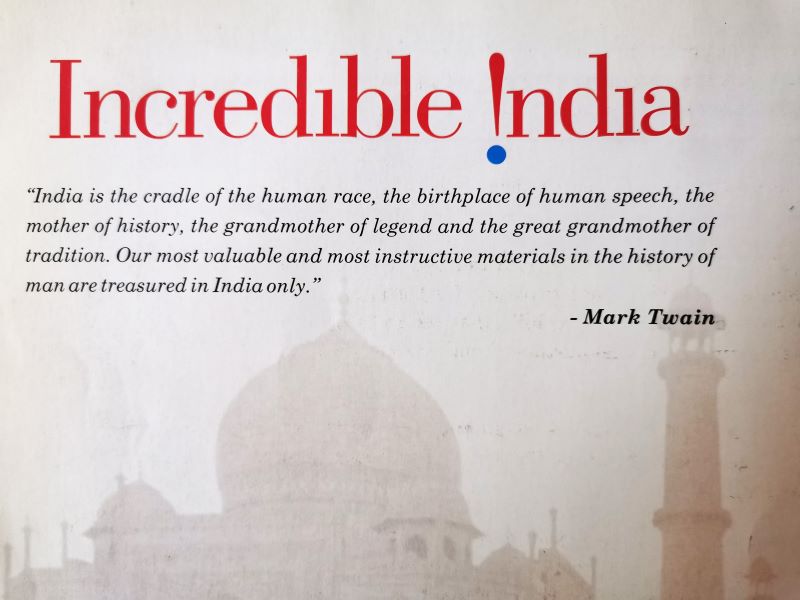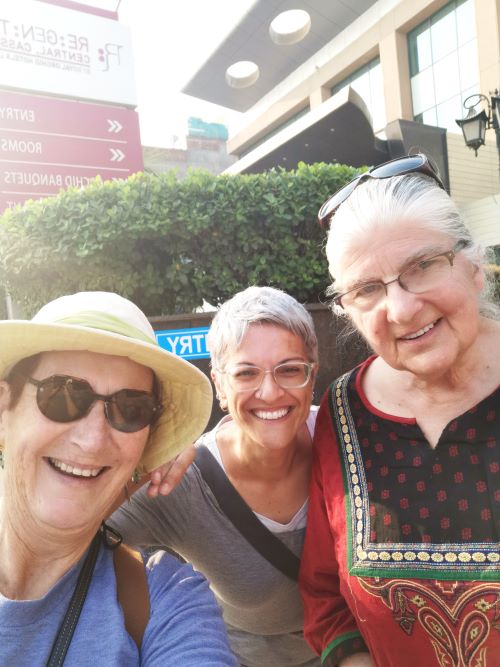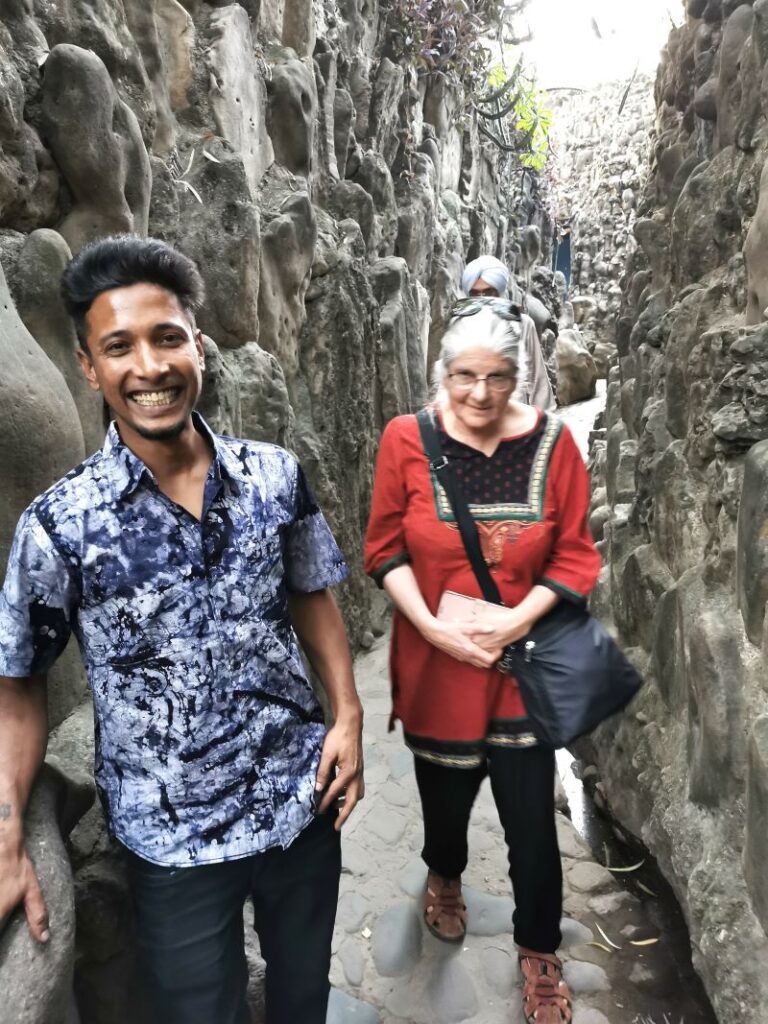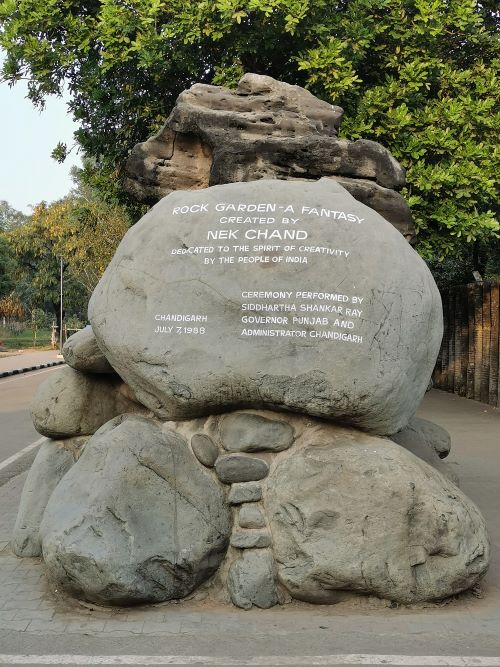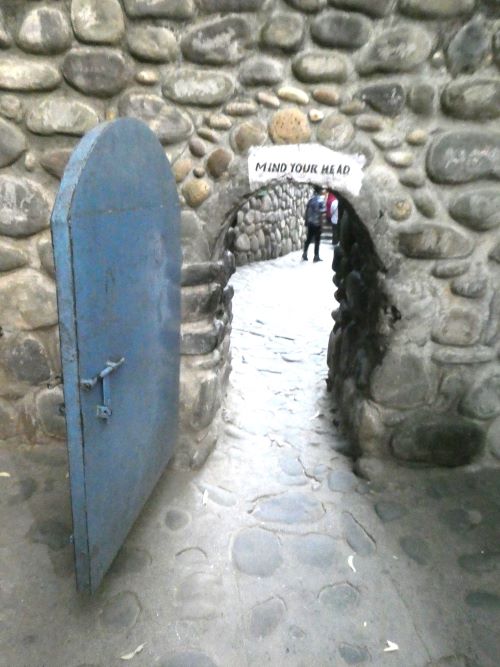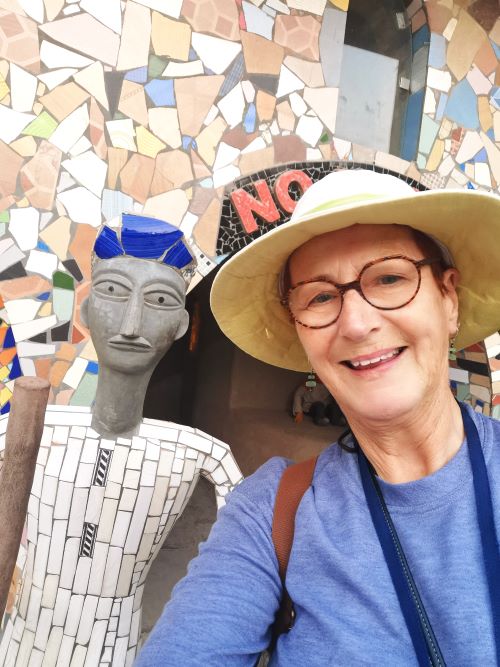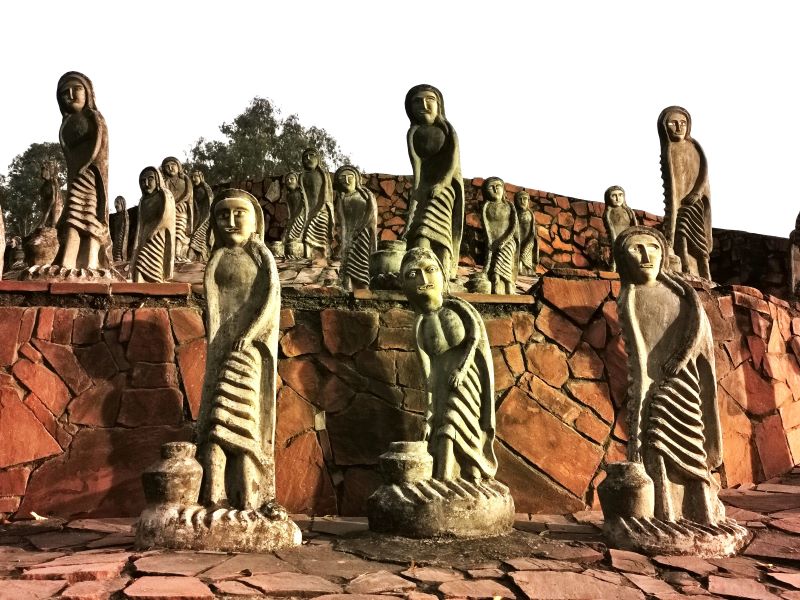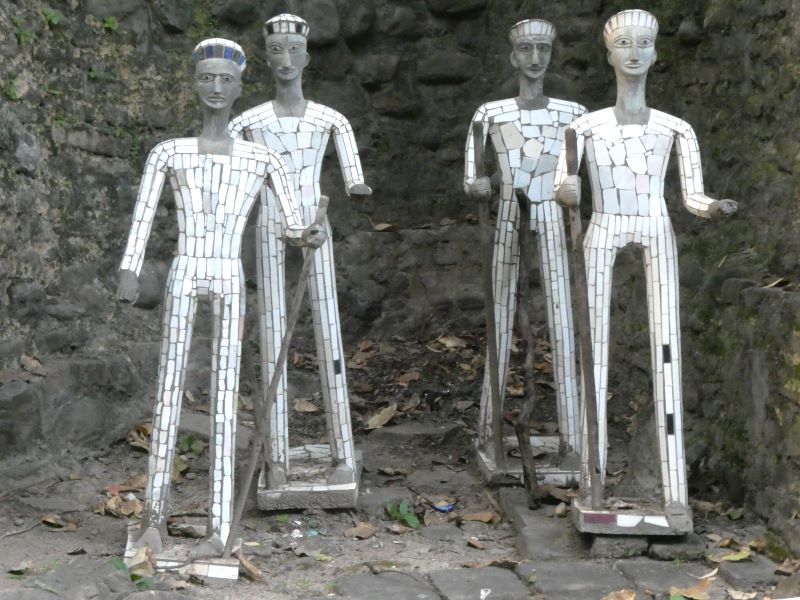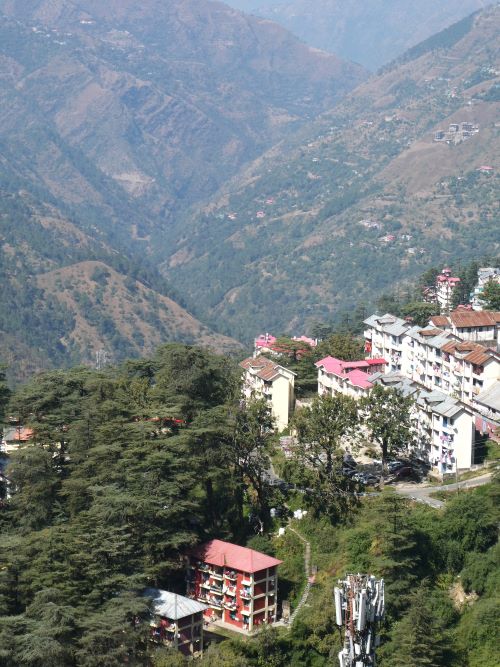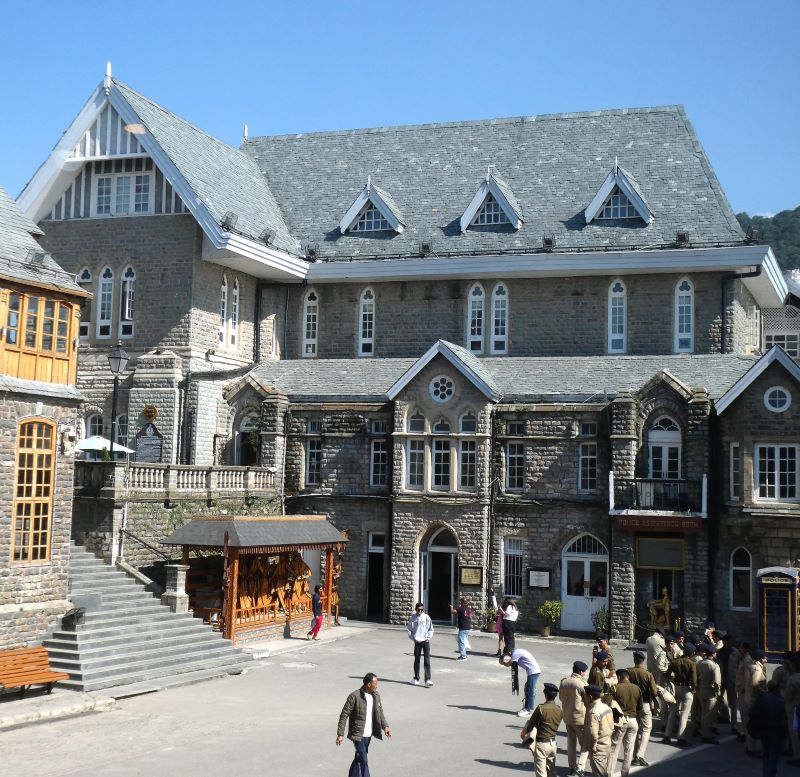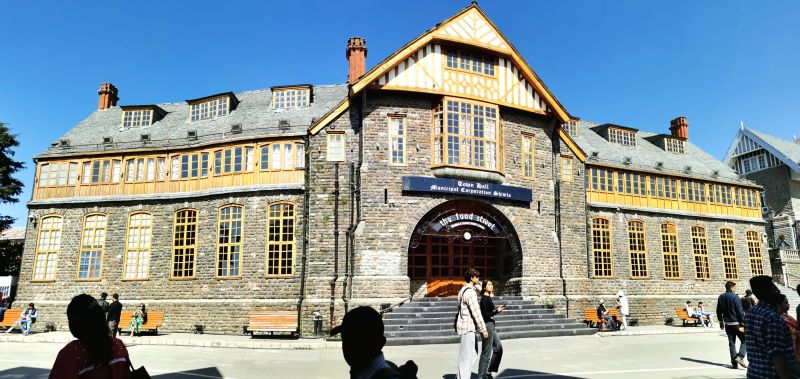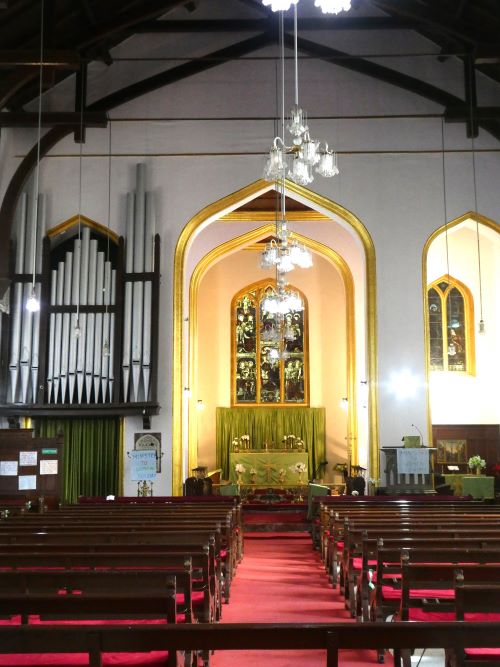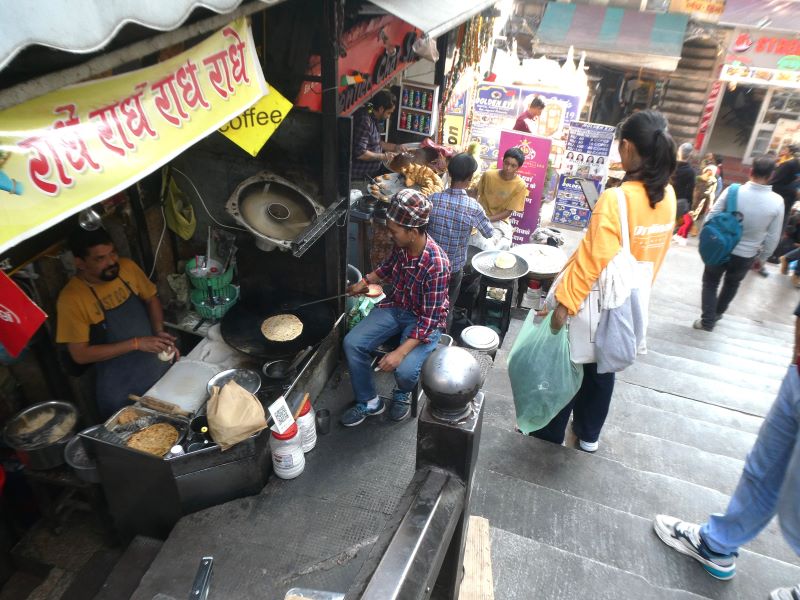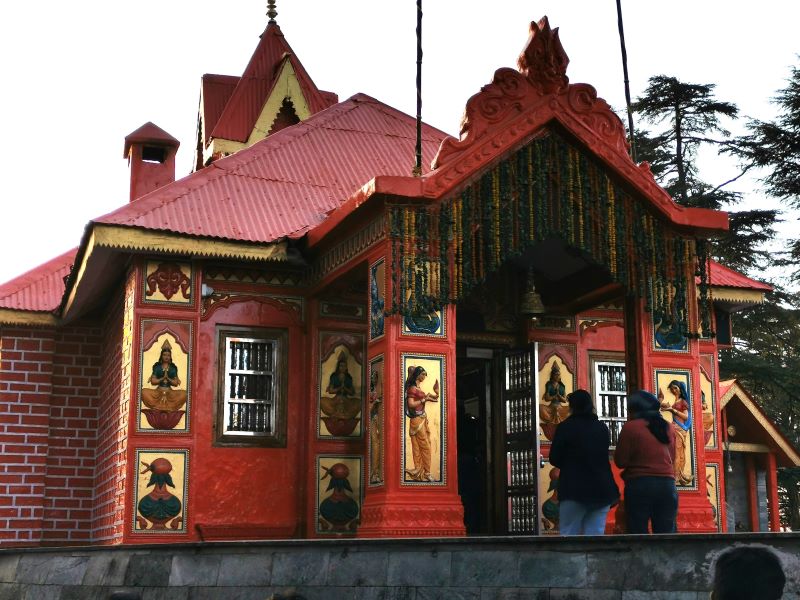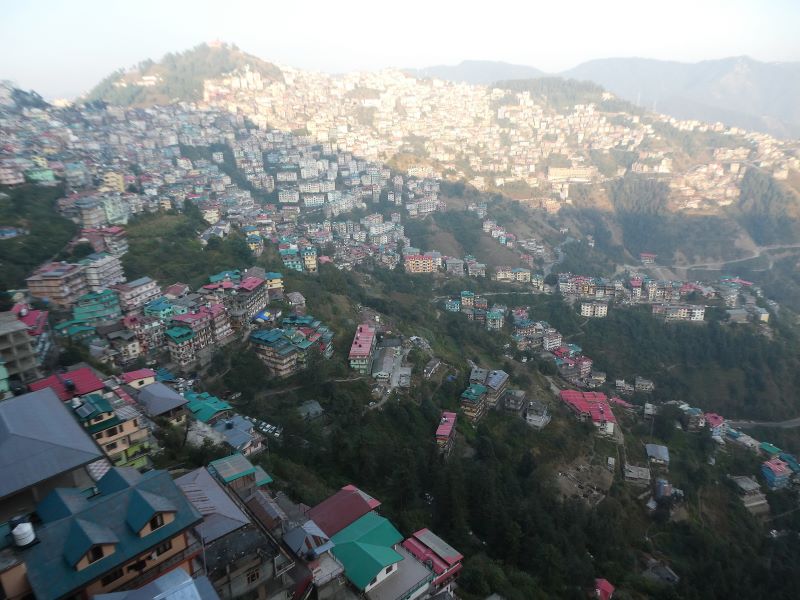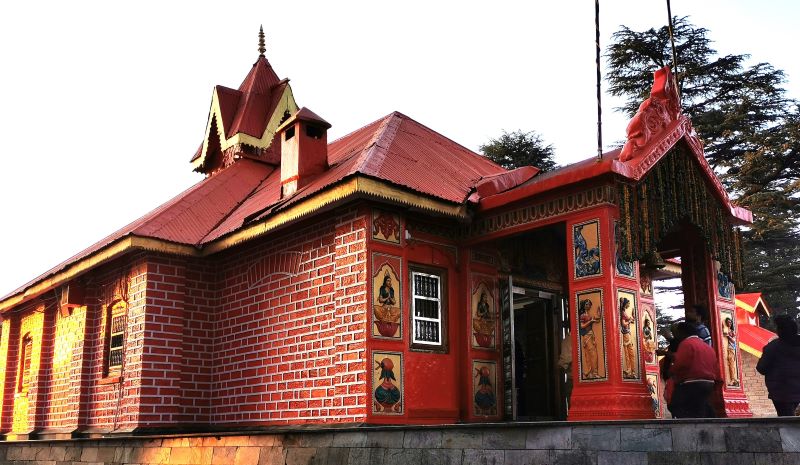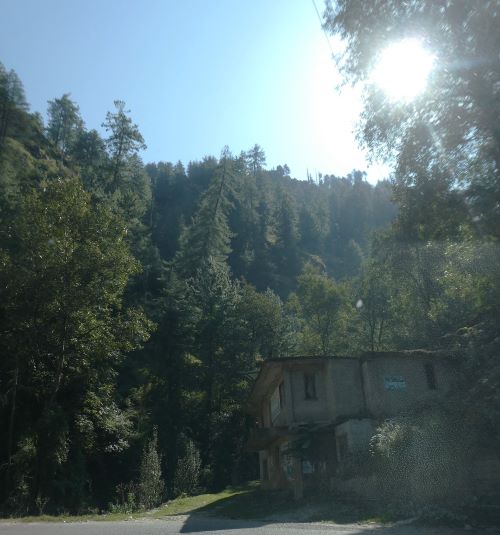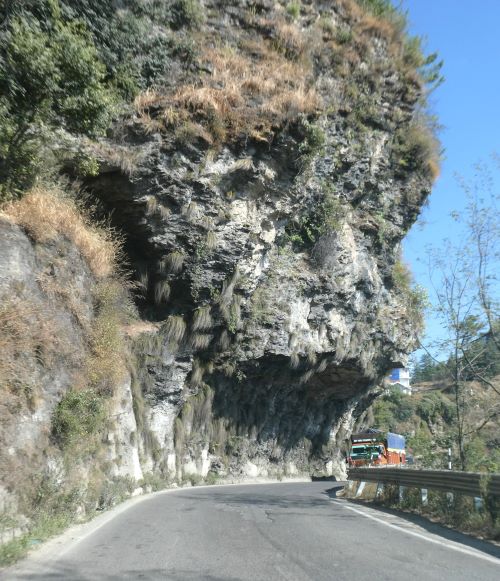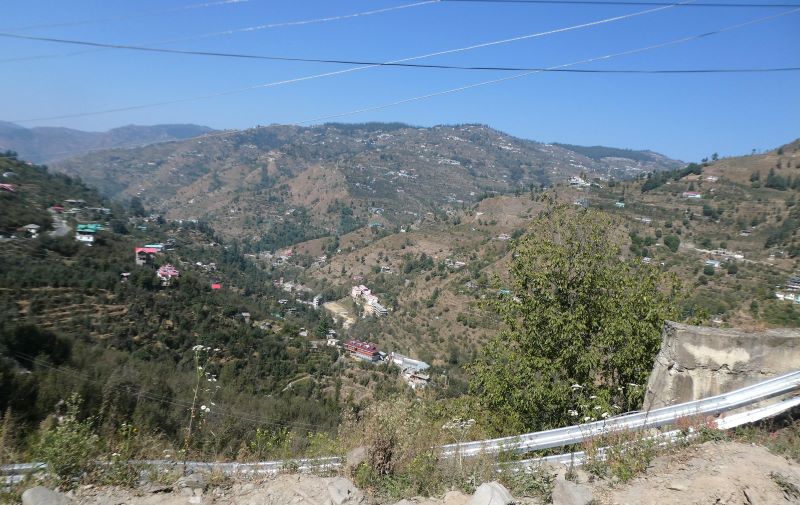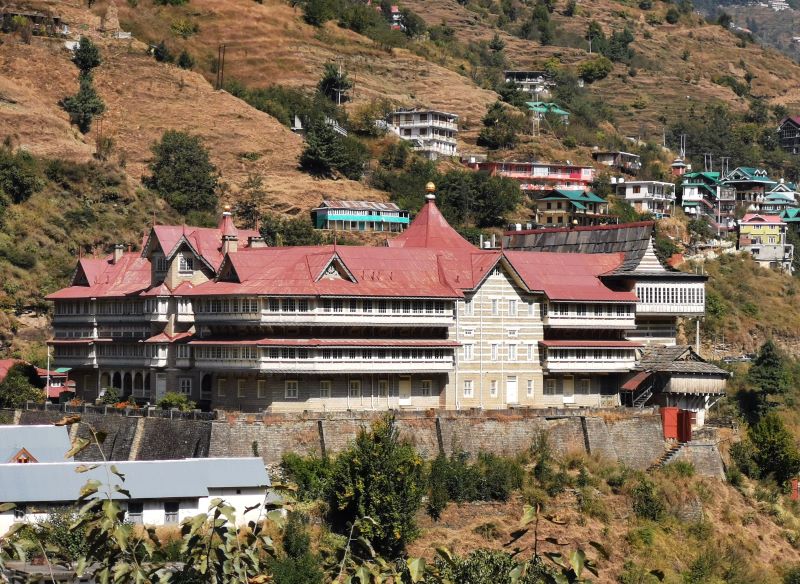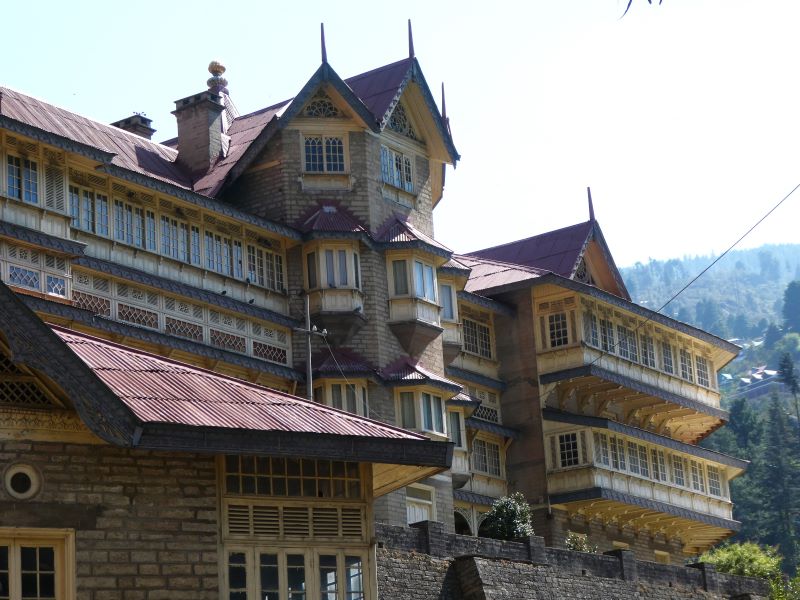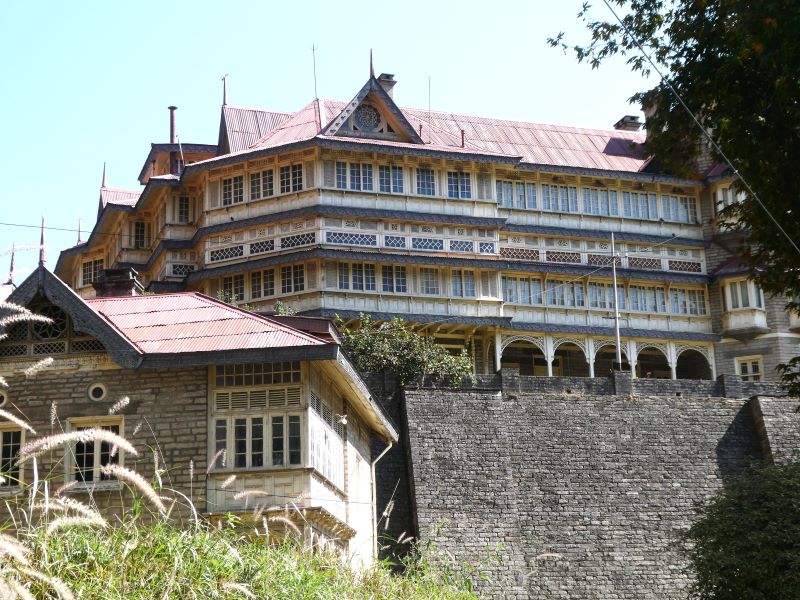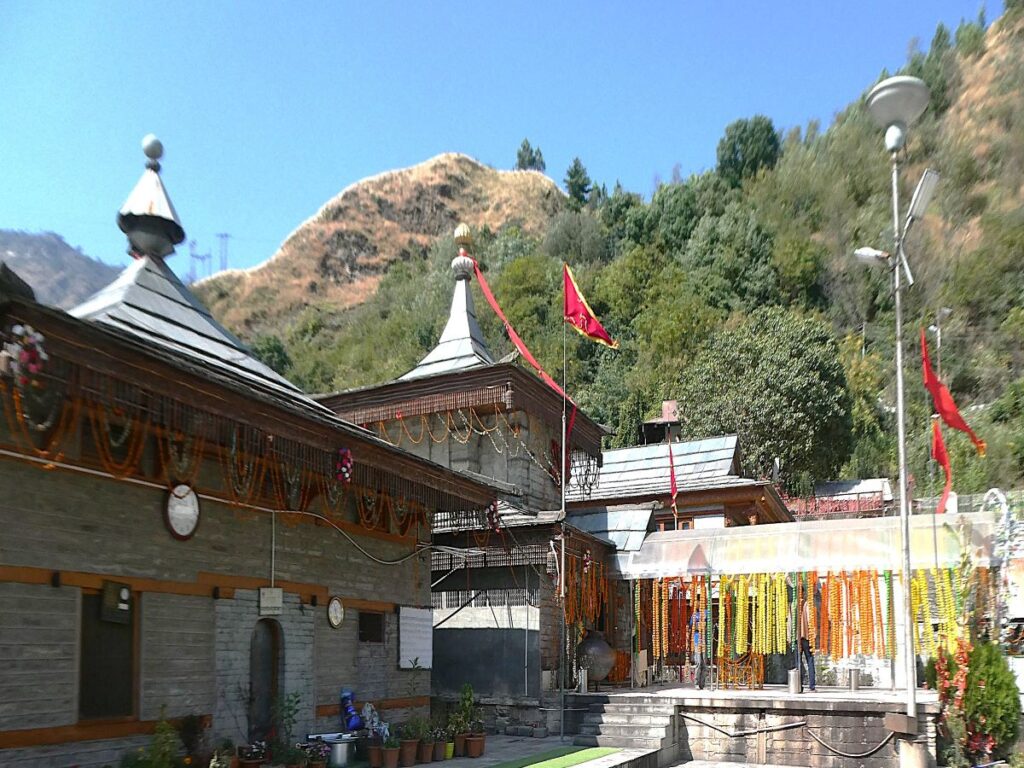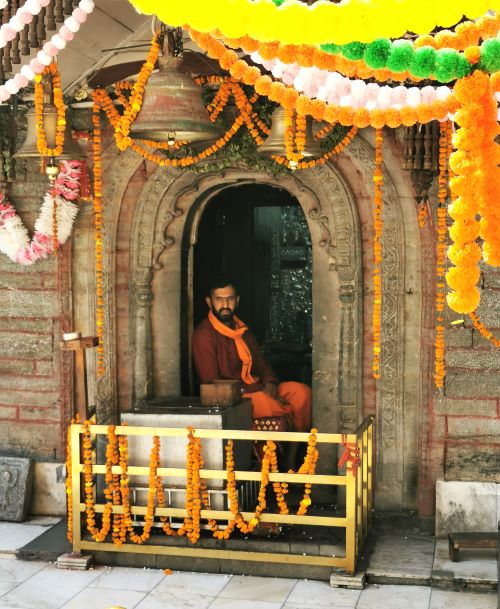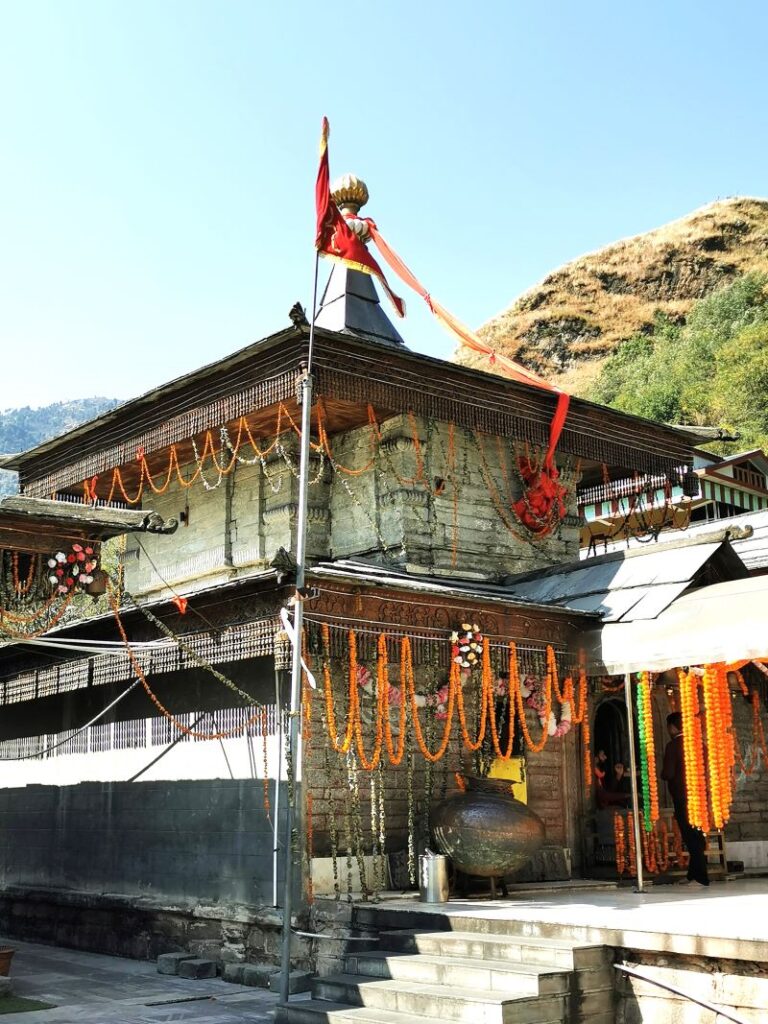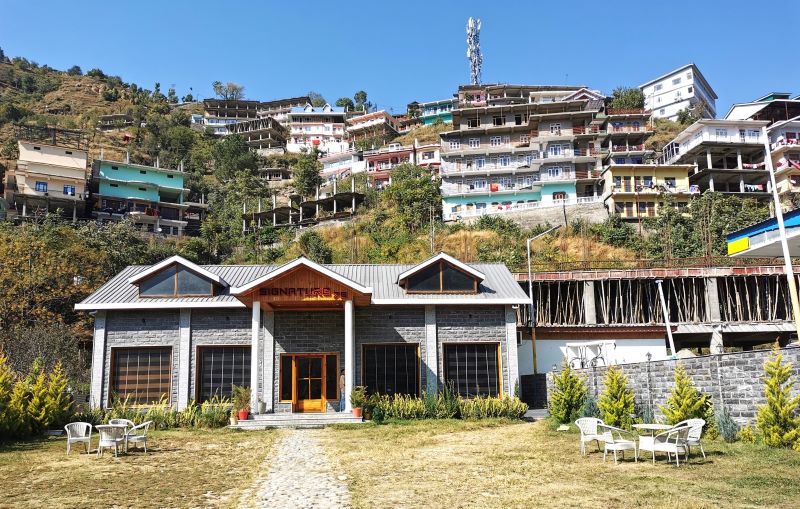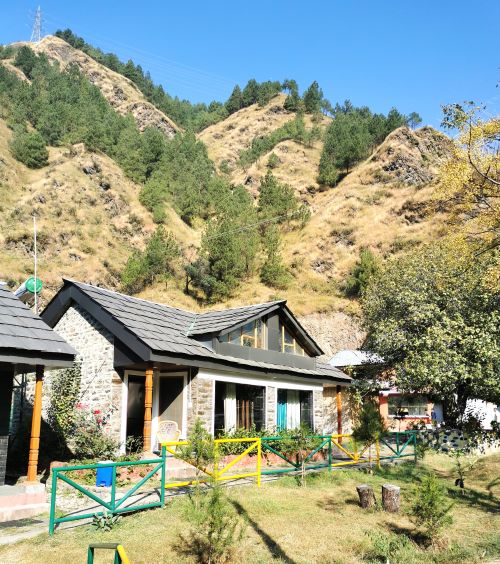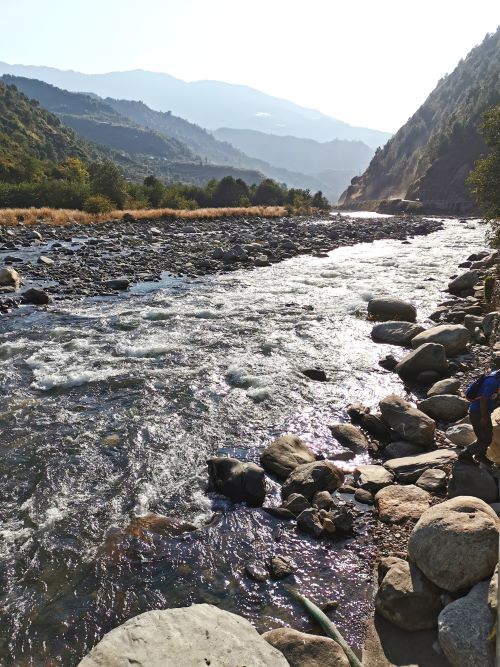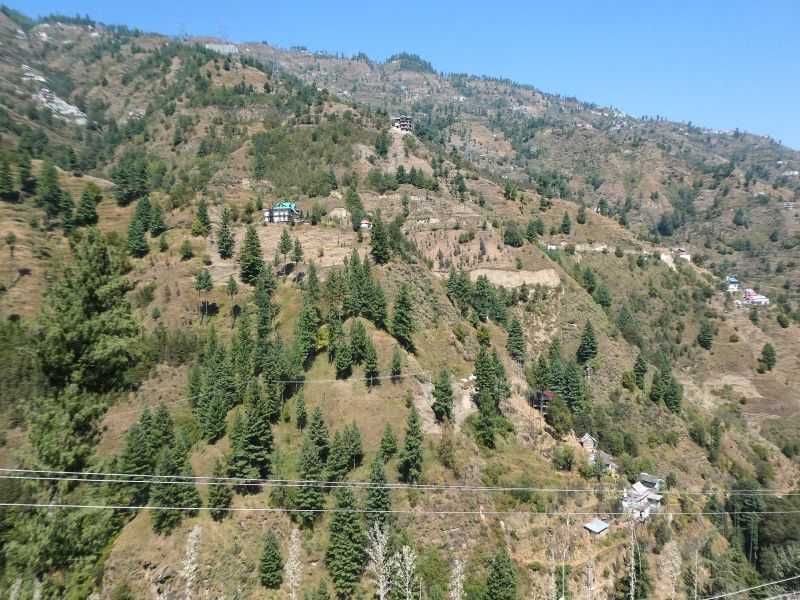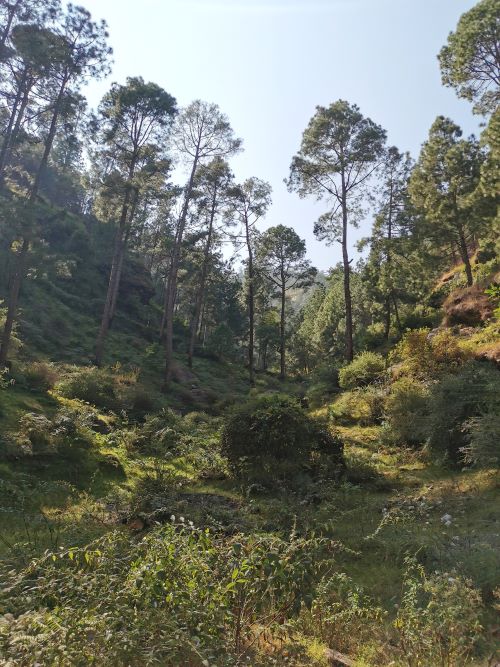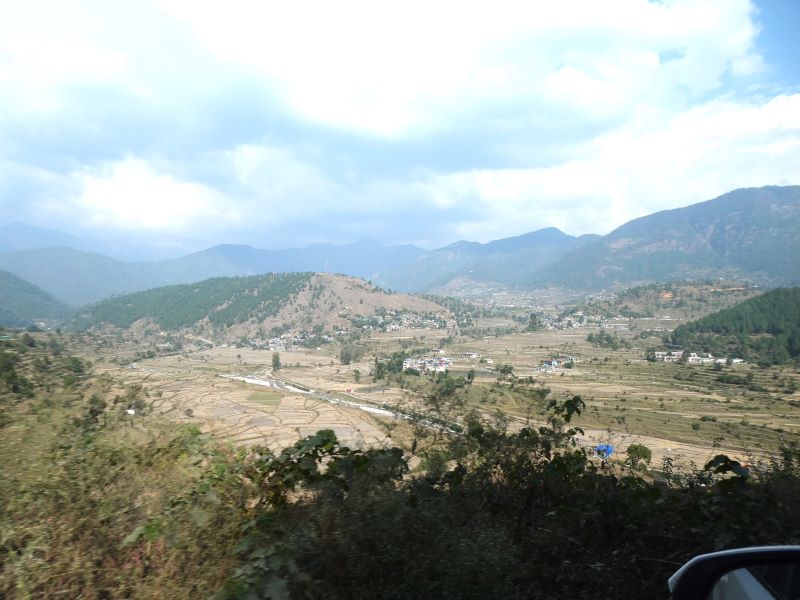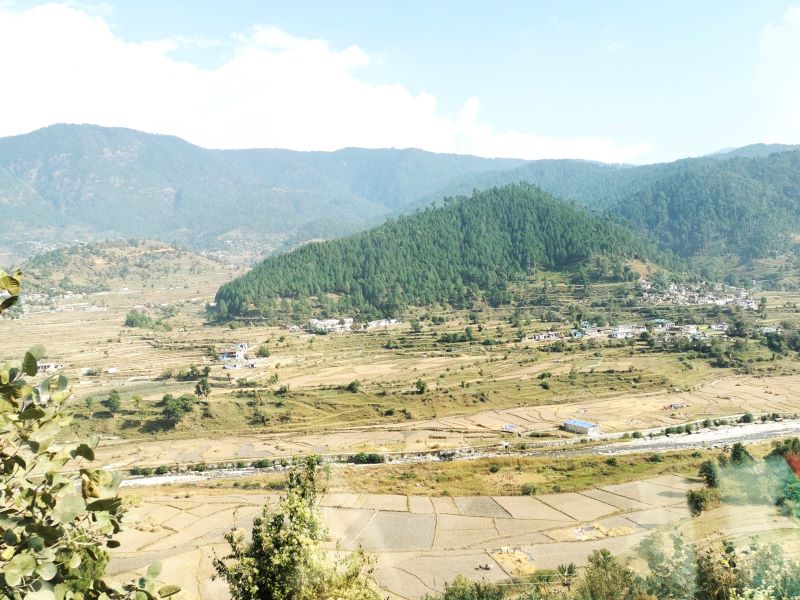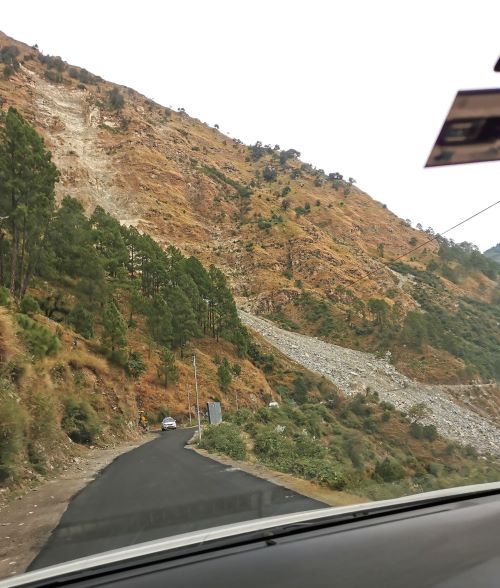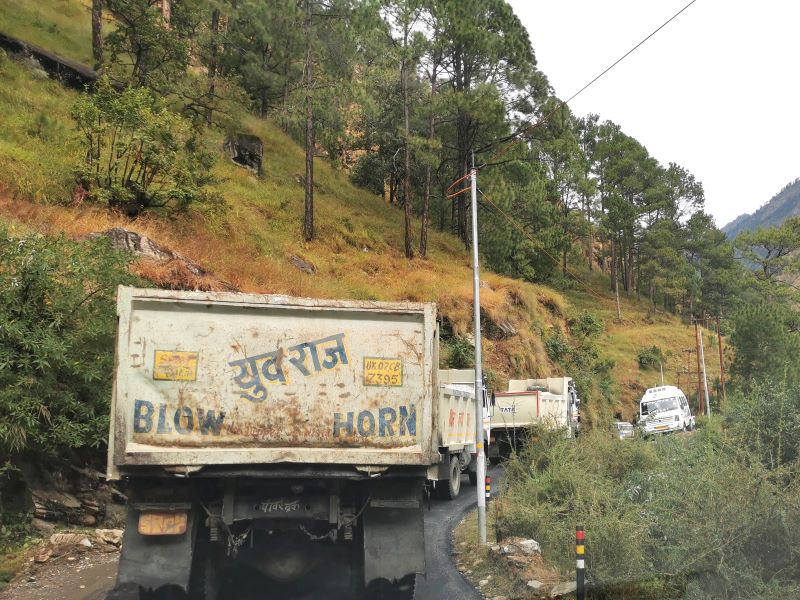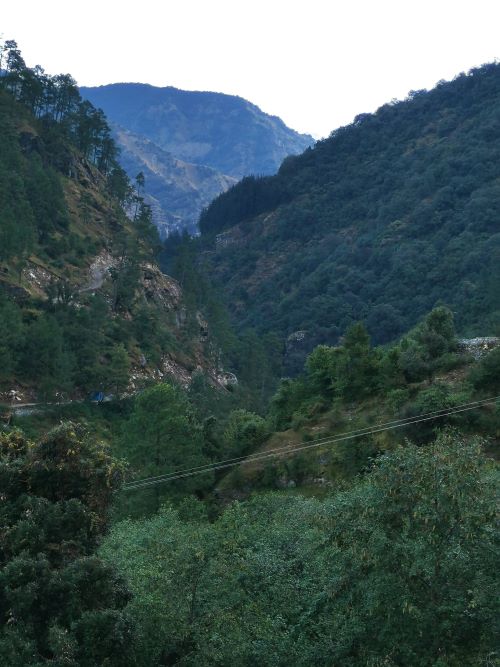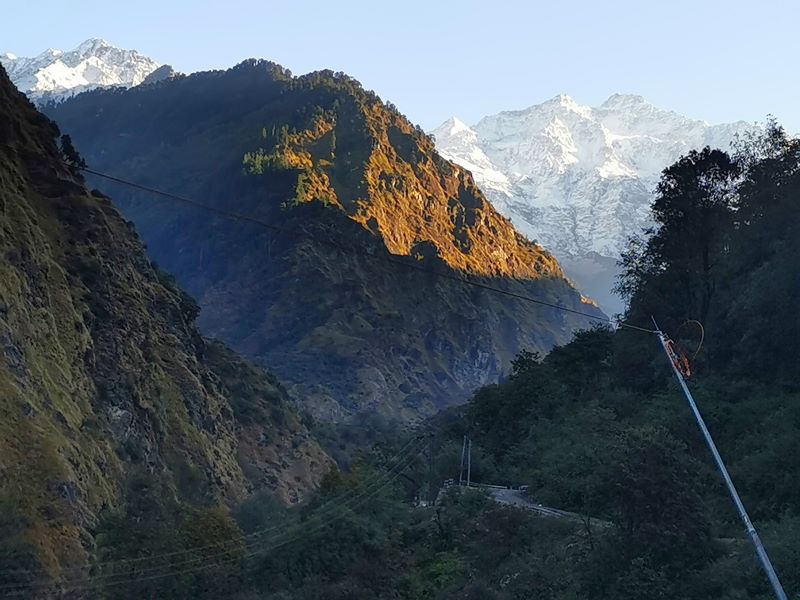Where in the world are we?
The Indian Himalayas!
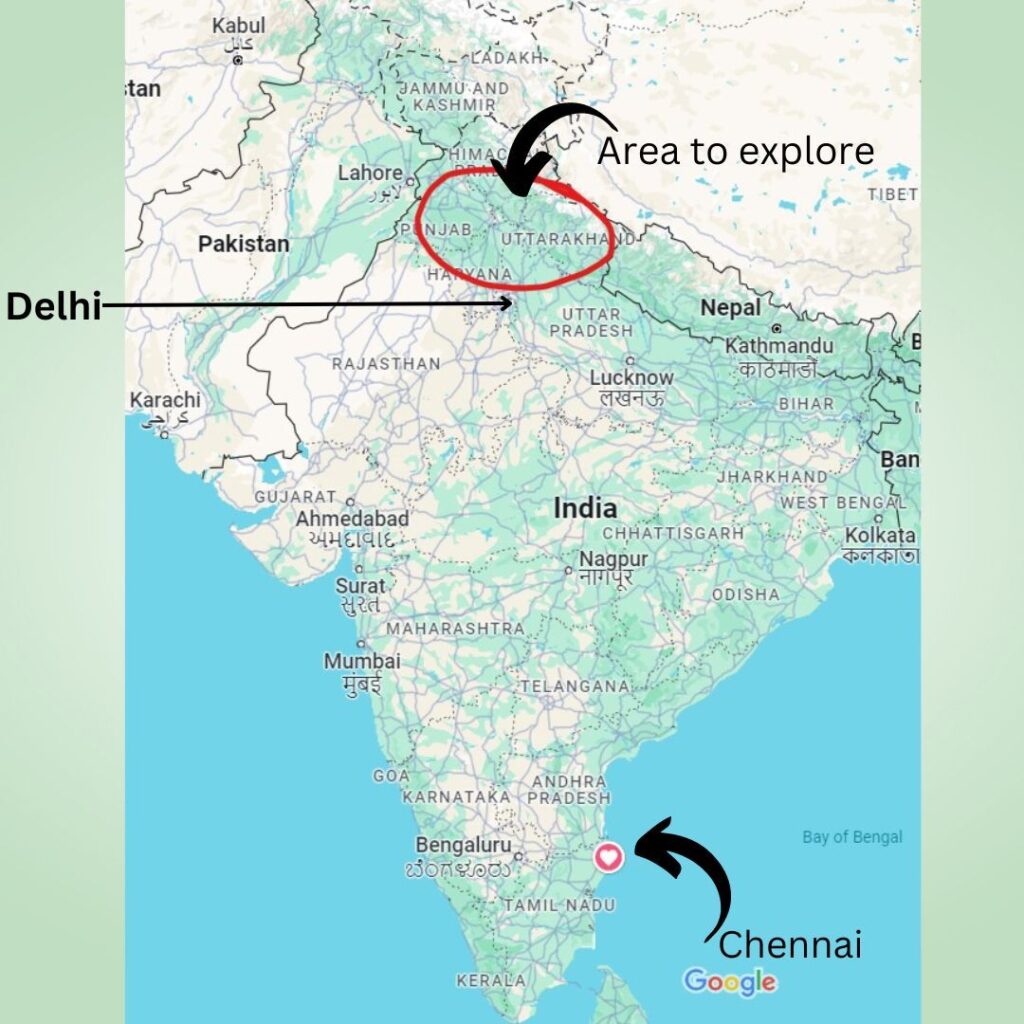
Part 1 of a 3 part series

How did this journey come about?
Seven years earlier, in 2017, as Shoba and I were leaving the Himalayas after another magnificent trip to Ladakh and the Valley of the Flowers, Shoba commented that she would like to complete her Char Dham journey on our next trip to the Himalayas. I had completed my Char Dham journey in 2014. The Char Dham pilgrimage includes visiting and receiving blessings at four significant temples—Badrinath, Kedarnath, Yamunotri, Gangotri—in the Himalayas for assistance on one’s spiritual pathway and liberation in this lifetime. Having already visited Badrinath and Kedarnath in the past 10 years, Shoba needed to journey to Yamunotri and Gangotri.

And so to this trip….
It took 7-years to make this happen but with the assistance of our trusted travel friend, Suresh Bahuguna, we created an itinerary. This post is the first of three that captures our 12-day journey.
Chandigarh
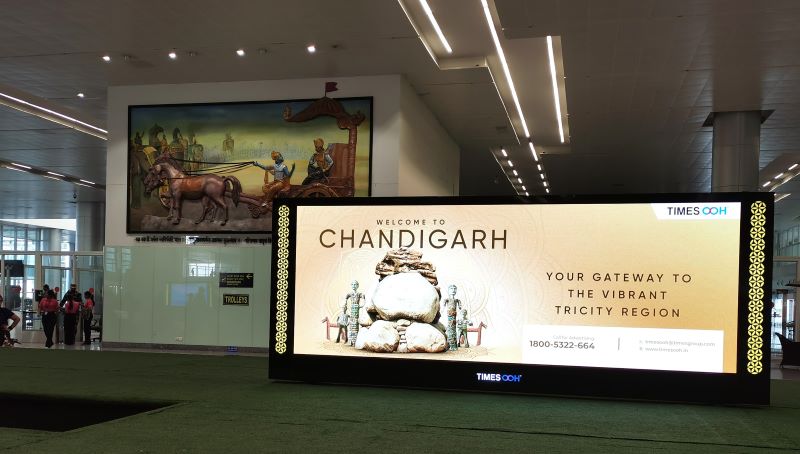
On this trip, Shoba and I were accompanied by Alice, a friend from Christchurch and Suresh’s son, Kartik, who had travelled with us in the past, this time as our trusty guide.
We came together in Chandigarh, state capital of Punjab and Haryana, which was established after Lahore, the previous capital of Punjab fell into the partition zone, leaving the Eastern aspect of the Punjab without a ruling city. The first planned city following the departure of the British Raj and partition in 1947, it is situated 240km north of New Delhi in the foothills of the Himalayan Shivalik range at an altitude of around 360m above sea level.
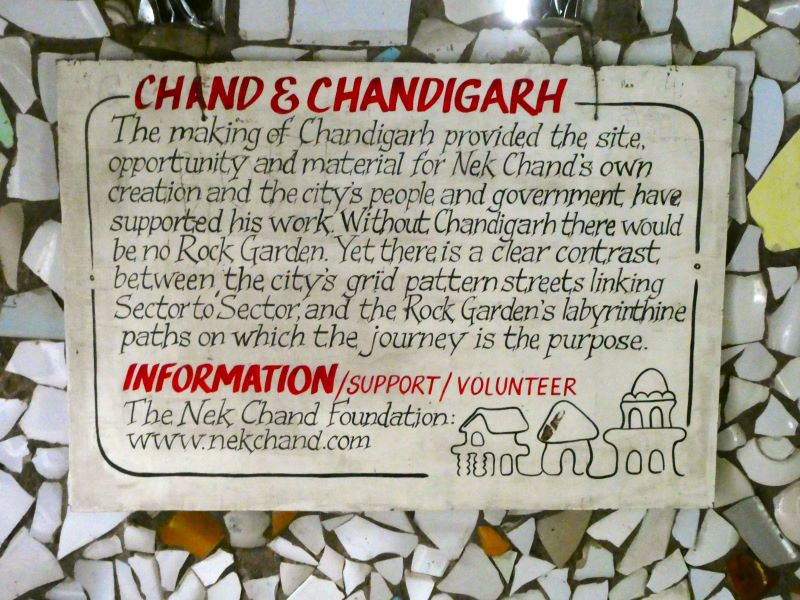
The Swiss-French modernist architect, Le Corbusier’s work still graces the city and is worth exploring; however, we had limited time, so chose to visit the ‘Rock Garden’, a park featuring sculptures made of stones and colourful mosaics, recycled items, and a mosaic amphitheatre.
https://chandigarh.gov.in/know-chandigarh/planning-architecture/historical-background
We learned about how Nek Chand built the garden in secret over 40-years from broken bits and pieces, including ceramic bathroom utilities, tiles and toilets, broken ceramic plugs, colourful bracelets and broken crockery, gathered during his job working for the city as a road inspector.
Remember to click on the photo collages to open and fully enjoy them!!
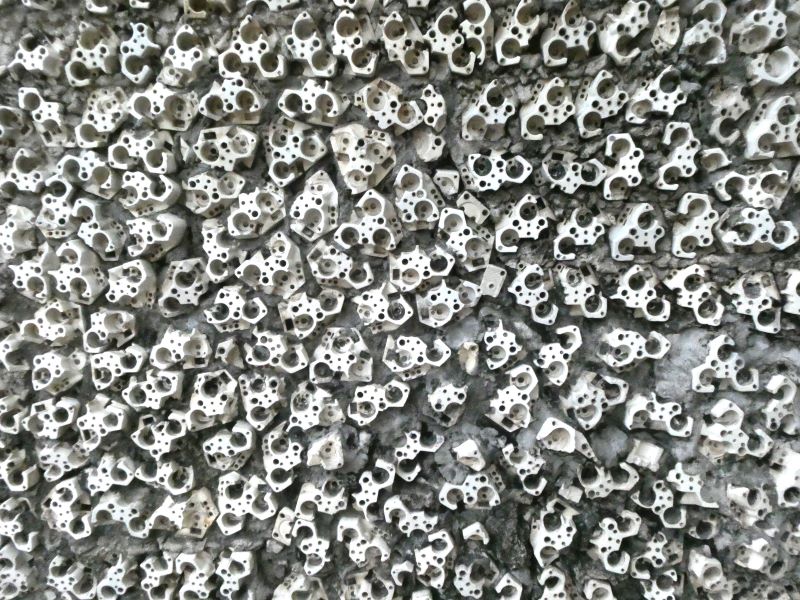
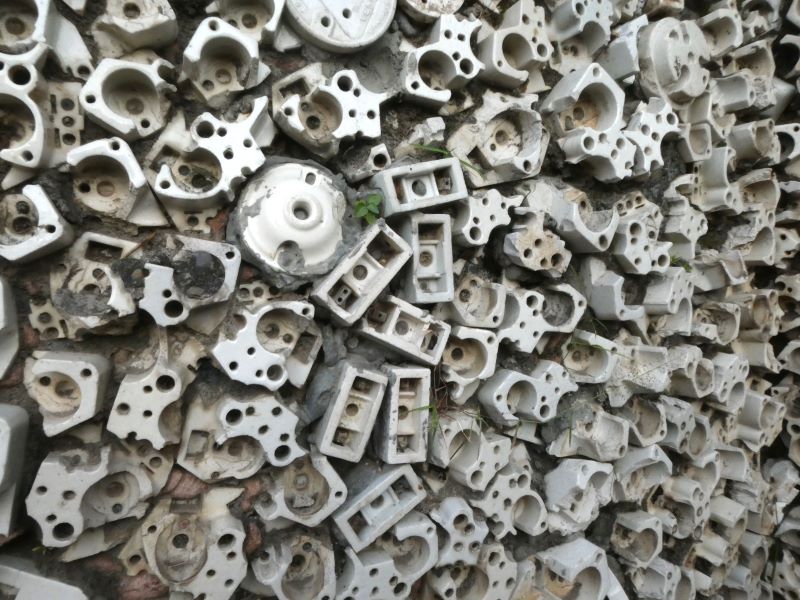
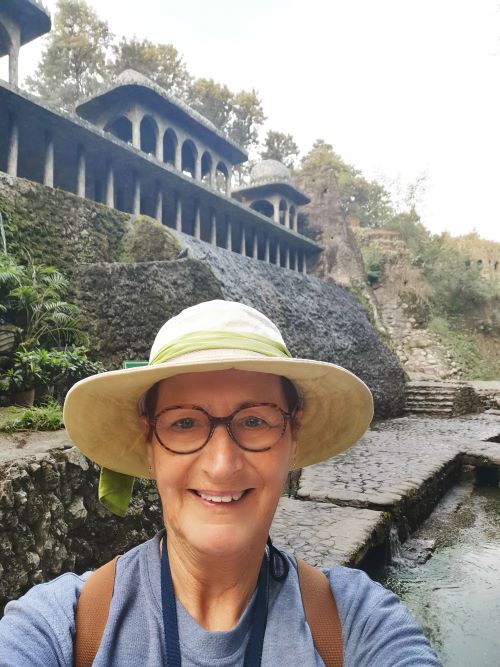
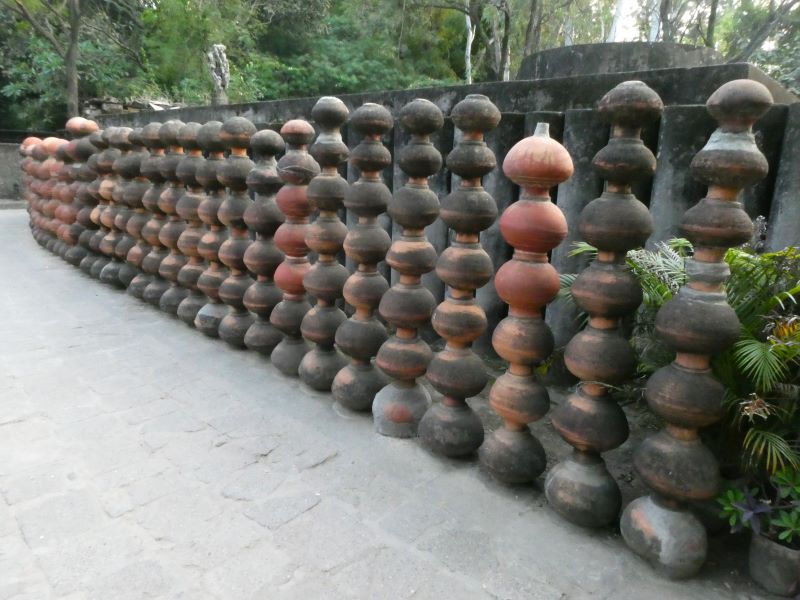
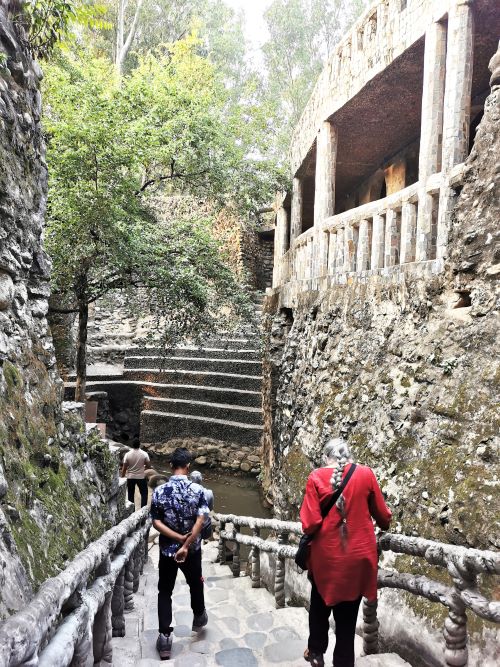
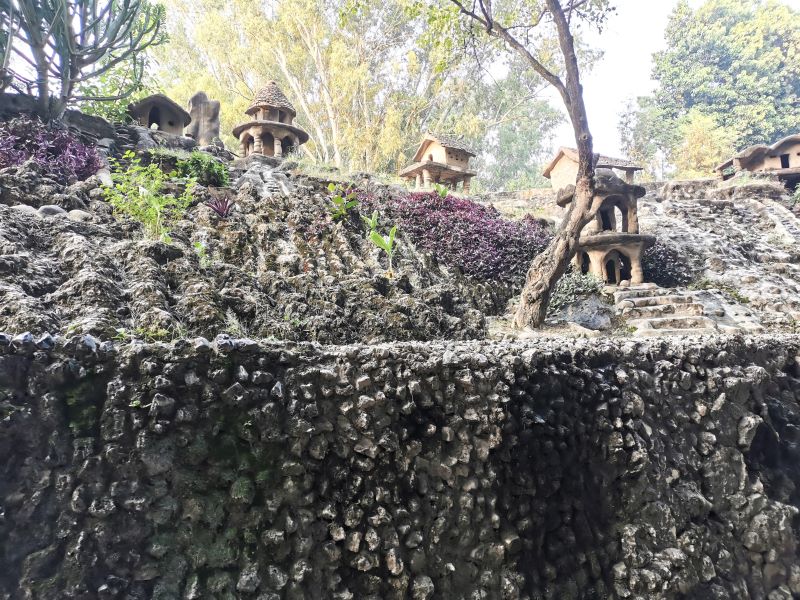
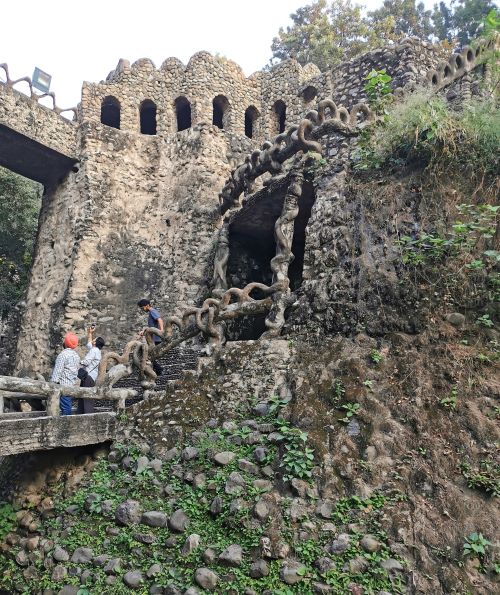
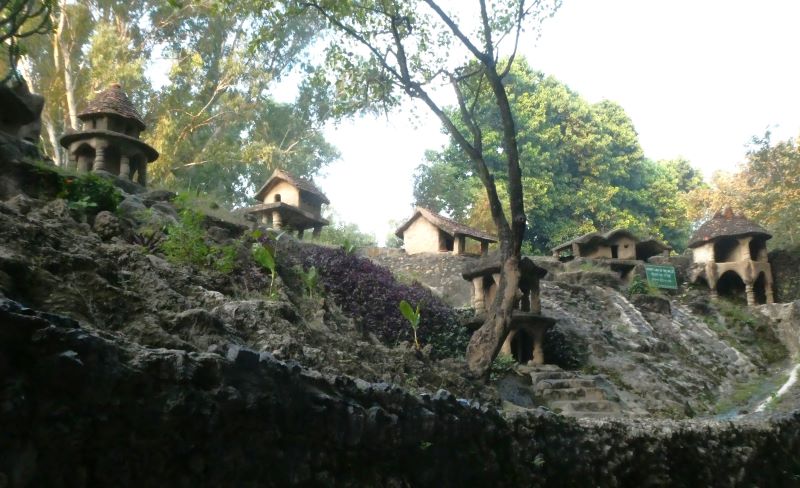
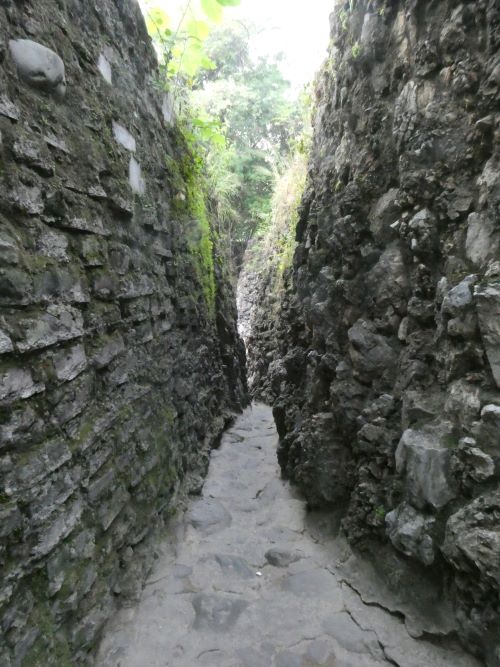
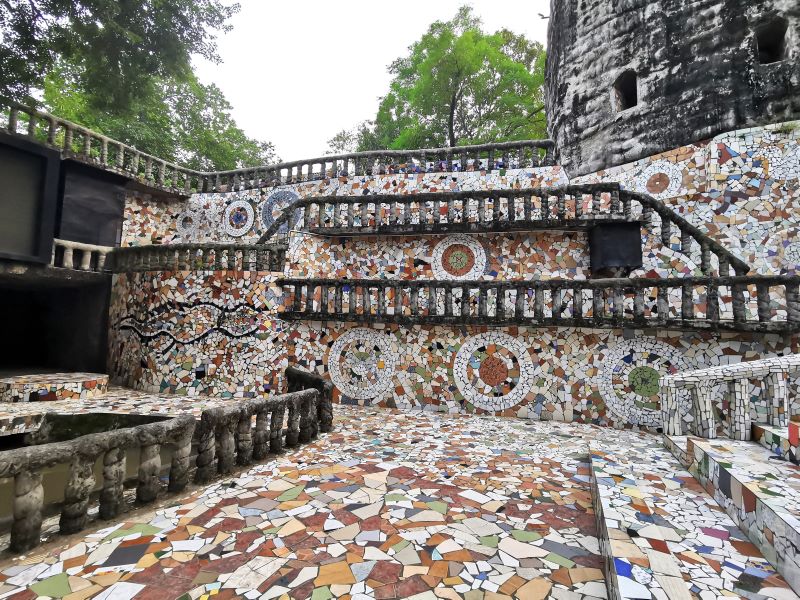
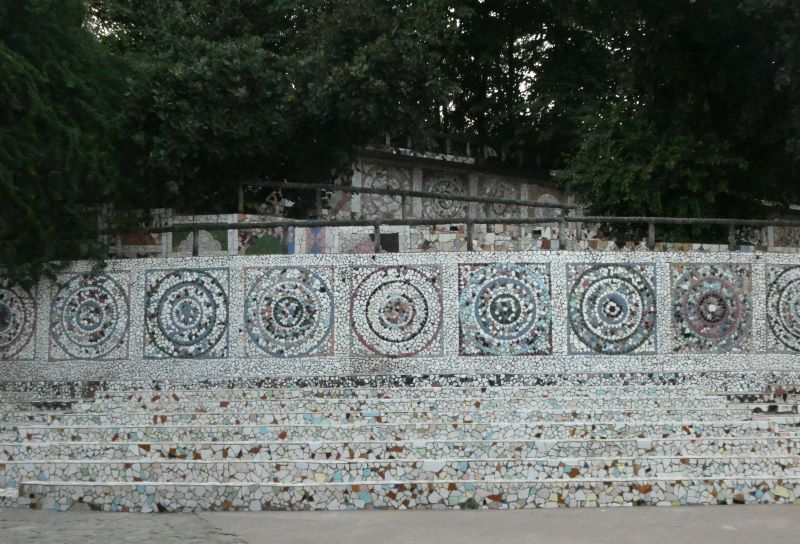
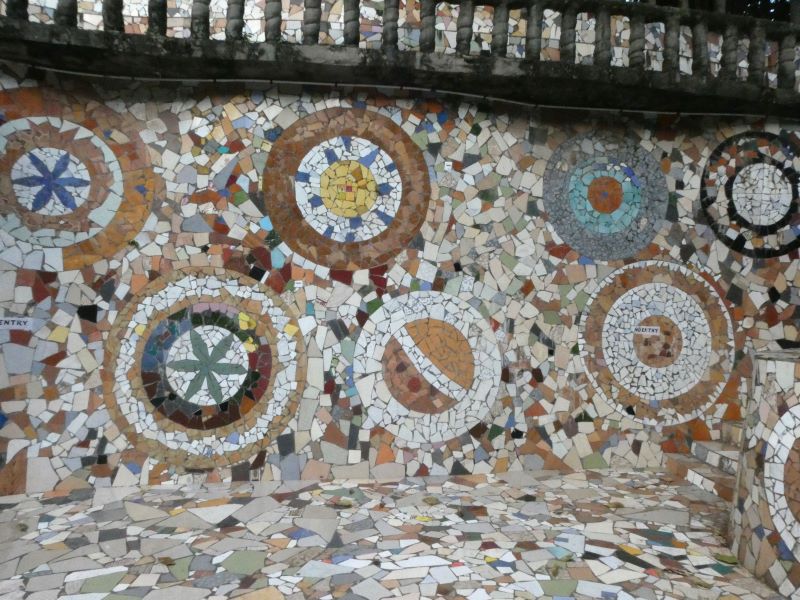
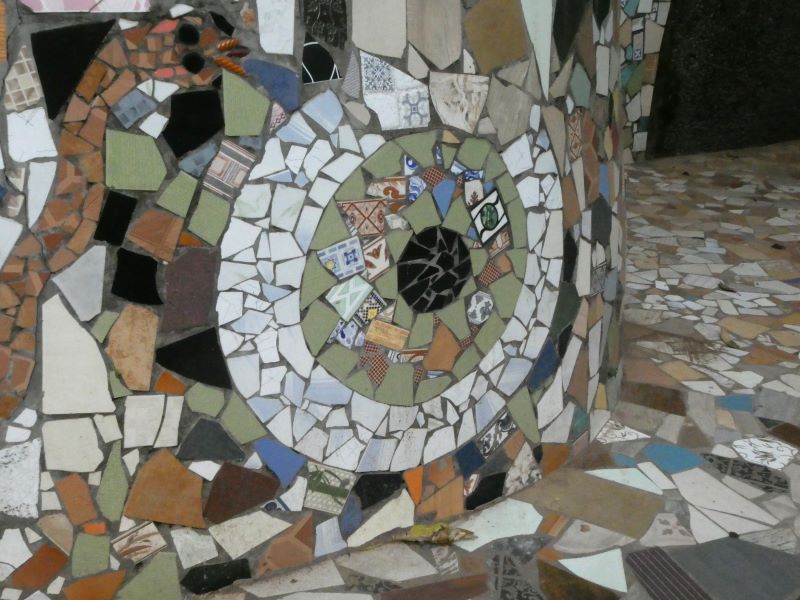

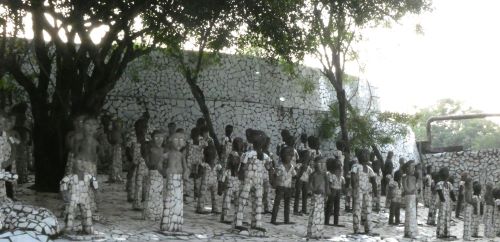
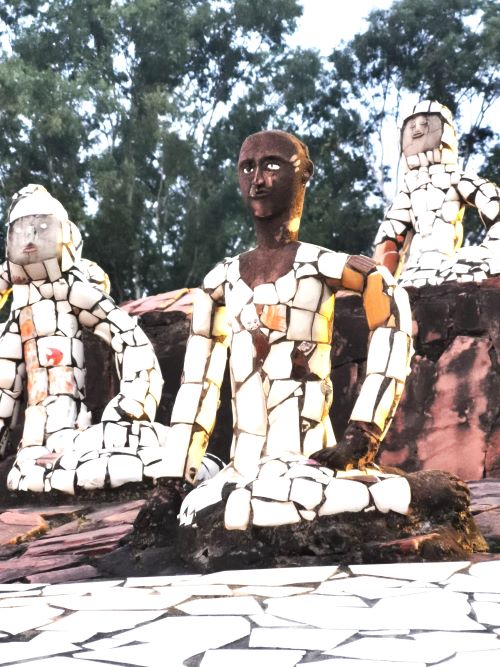
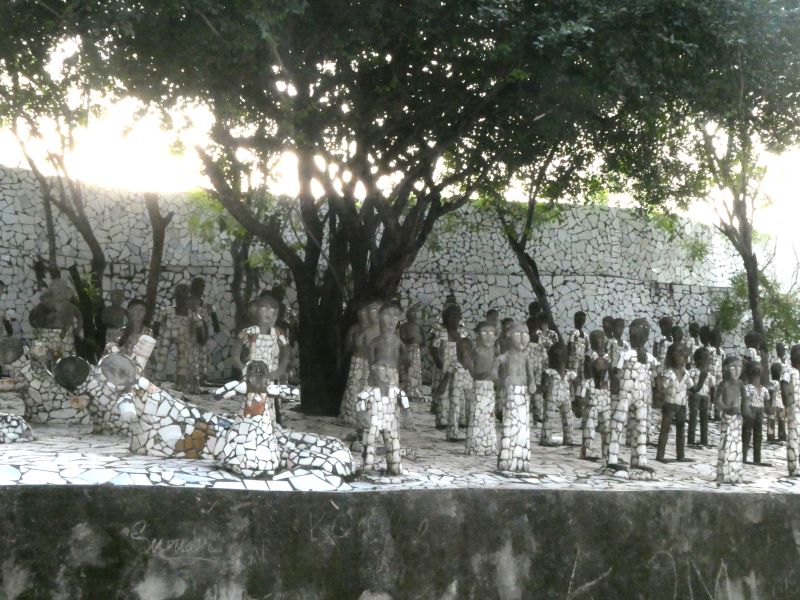
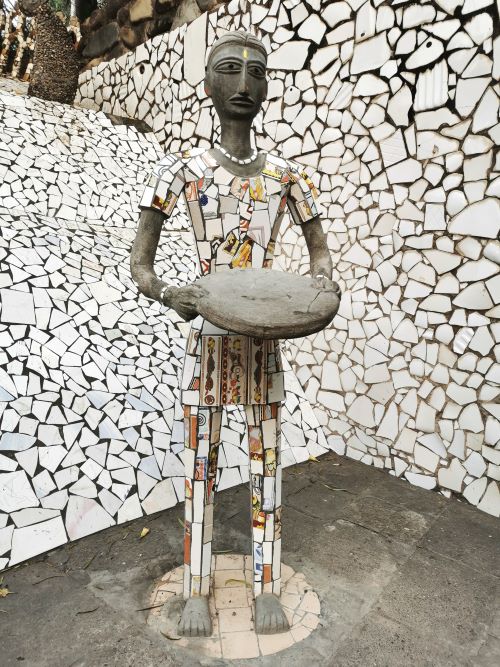
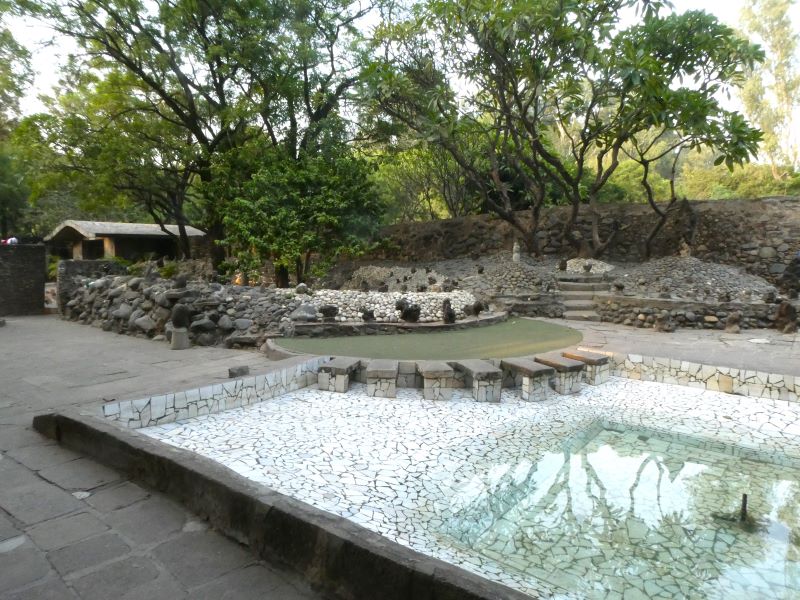
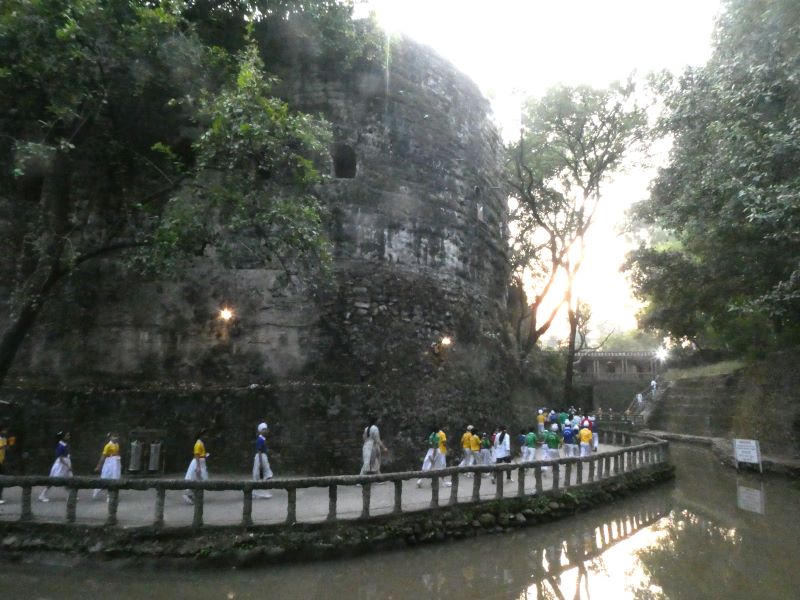
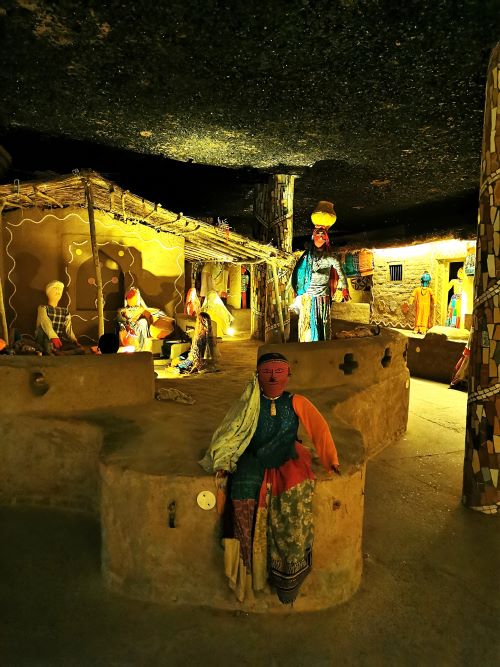
The park stands as a testament to his creativity and many long hours of hard work and is a marvellous place to explore and be creatively inspired.
https://en.wikipedia.org/wiki/Nek_Chand
Back out on the streets, in the balmy evening heat, we observed the wide roads lined with trees and cycleways used for motorbikes, pushbikes, and walking as we returned to our hotel for dinner and to prepare for our onward journey the following morning.
Shimla and the Hills of the Lower Himalayas

Awake and on the road early, I felt excited to once again be heading into the hills of the Himalayas. It had been 14 years since I had been in this area of the mountains, and as the car started to climb and curve, passing through villages clinging to steep-sided hills, I felt at home. The trees, sights, and sounds were familiar but soon we were seeing vistas of mountains and valleys, villages and larger towns, new to my enquiring eyes. Higher and higher, around these hills and across valleys, we drove until in the far distance we could see Shimla, colourful and clinging to the top of the mountain. Spread out over a 9.2km (5.7mi) area and spanning 7 ridges from east to west, Shimla sits at 2,206m (7,238ft) above sea level. Surrounded by lush green hills and snowcapped mountains, Shimla offers breathtaking views at every turn.
Remember to click on the photo collages to open and fully enjoy them!!
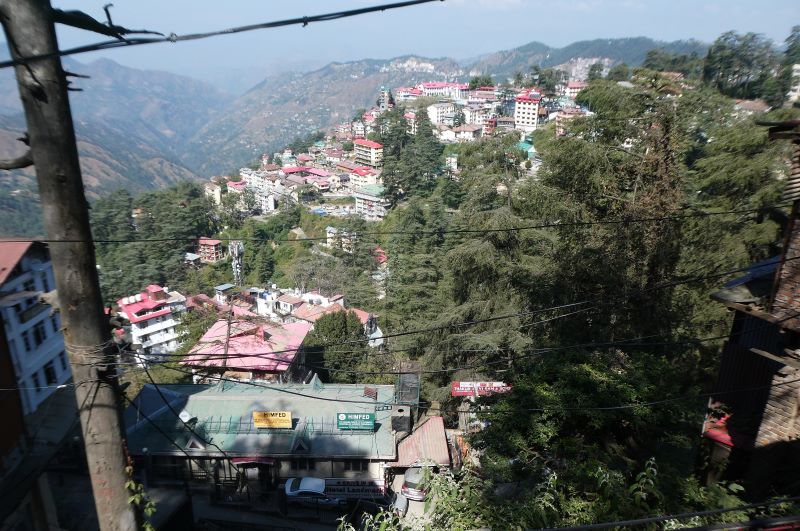
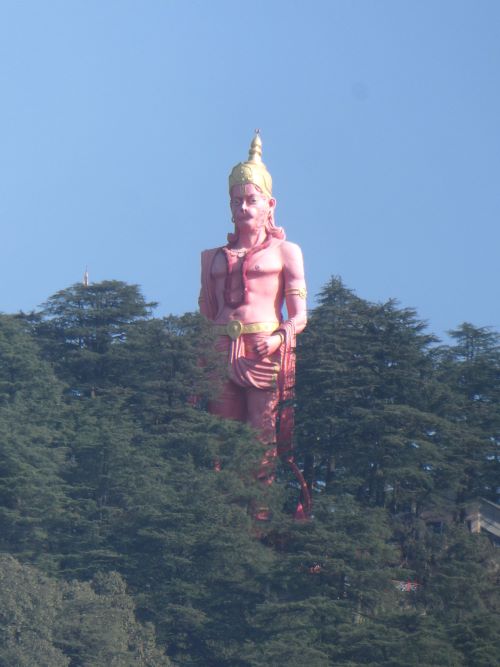

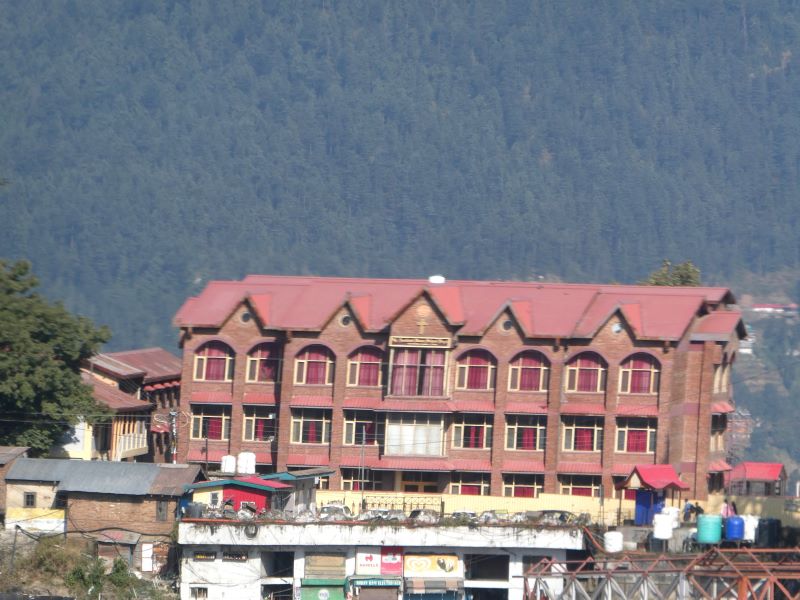
Once the summer capital of the British when they occupied India, Shimla is now the capital of the state of Himachal Pradesh. The very graceful stone and wooden municipal and commercial buildings, and residences are set around ‘The Mall’.
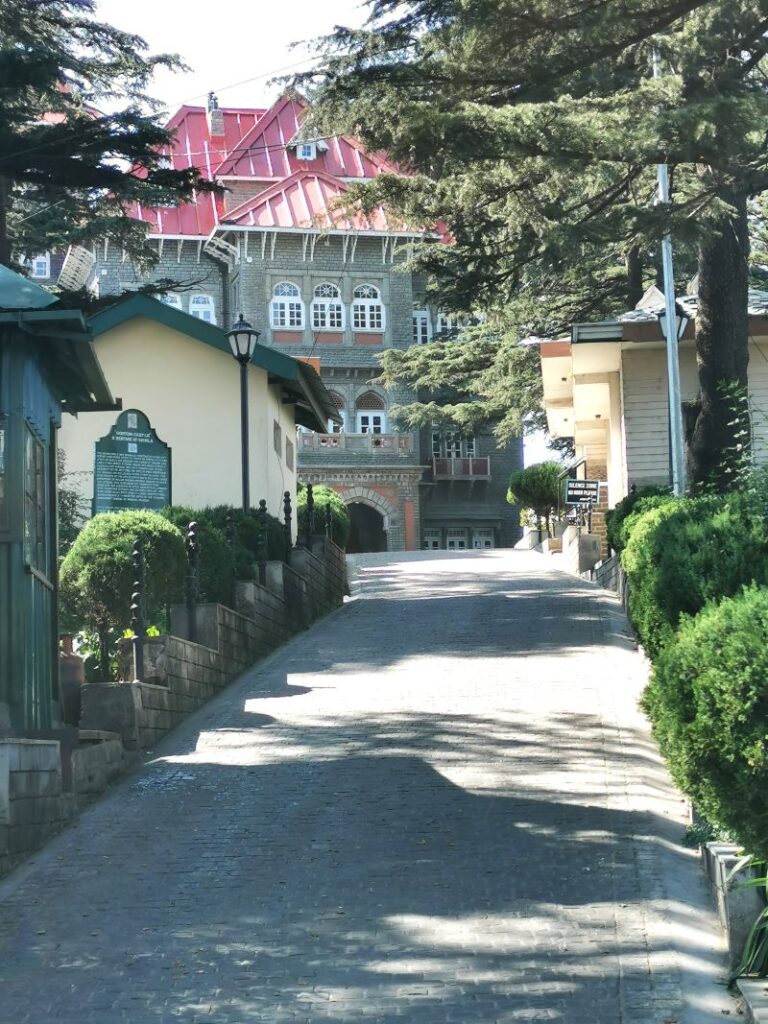
Devoid of cars, people can stroll, enjoy the ambience, and purchase from the local artisans and handcraft shops before visiting Lakkar Bazaar, a maze of streets on the lower side of the hill which The Mall graces, where almost anything from food to fine clothes can be purchased.
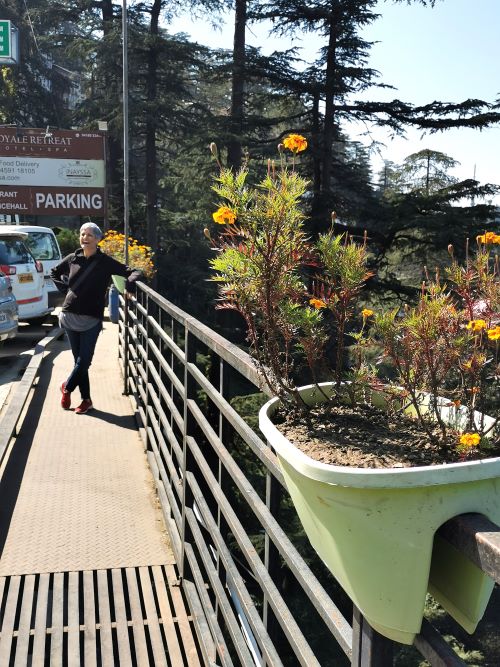
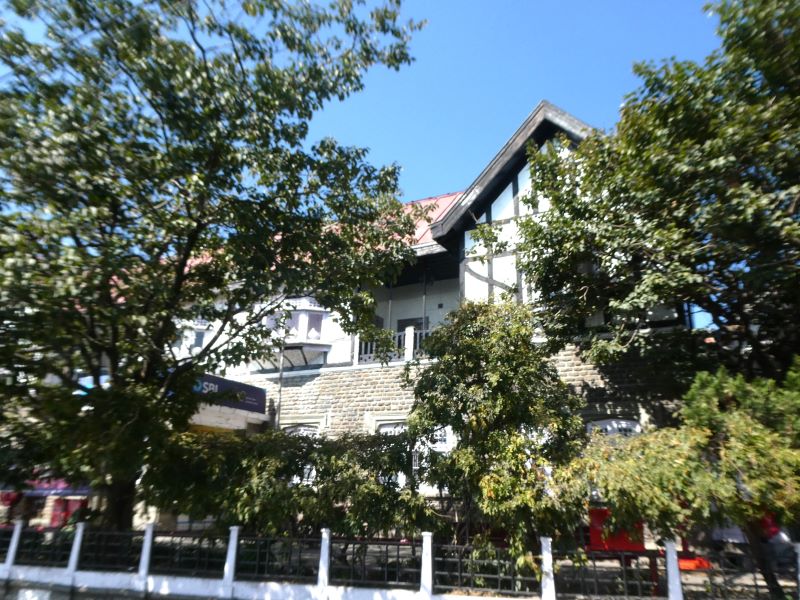
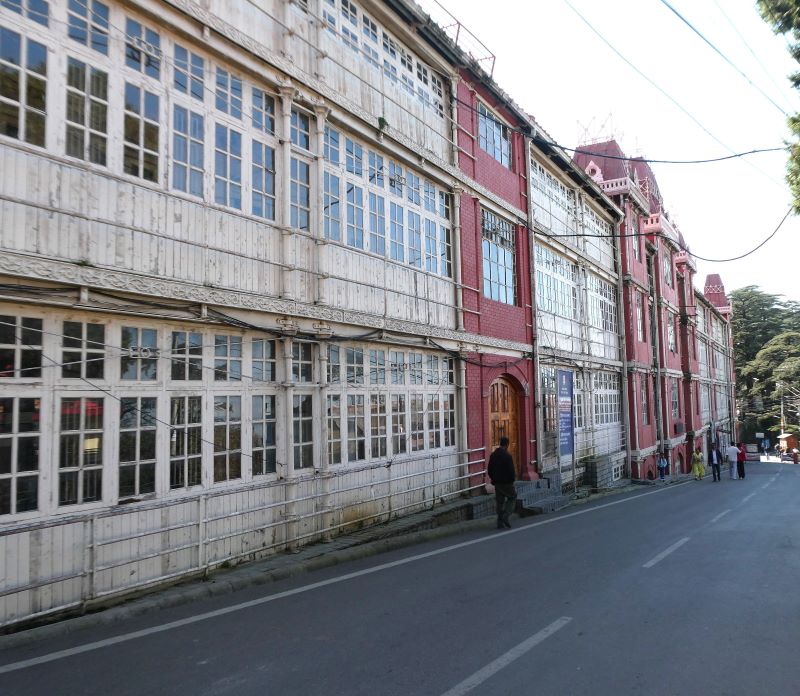
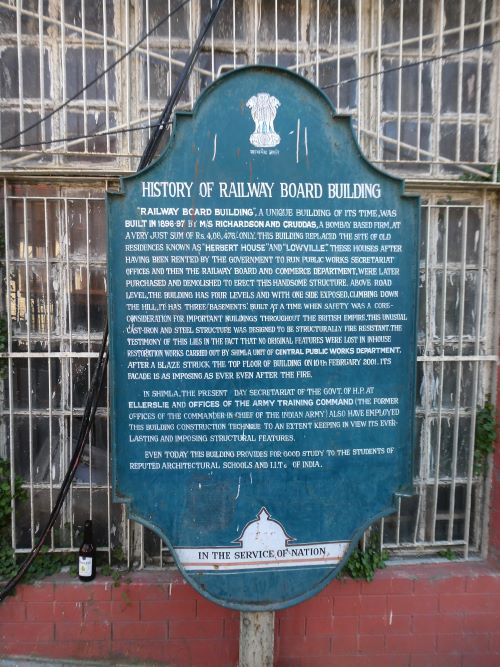
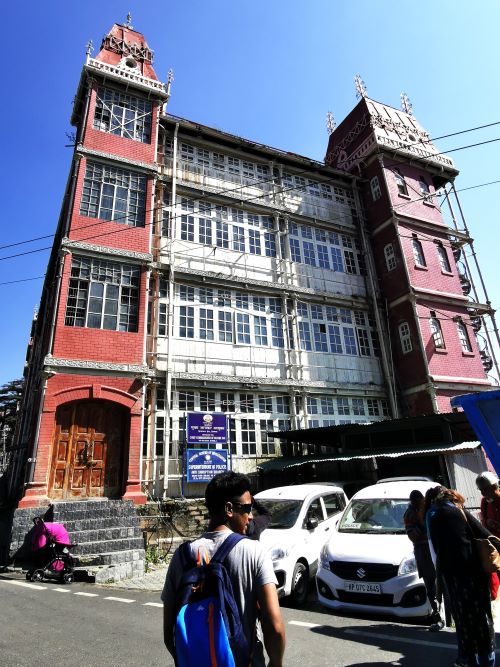
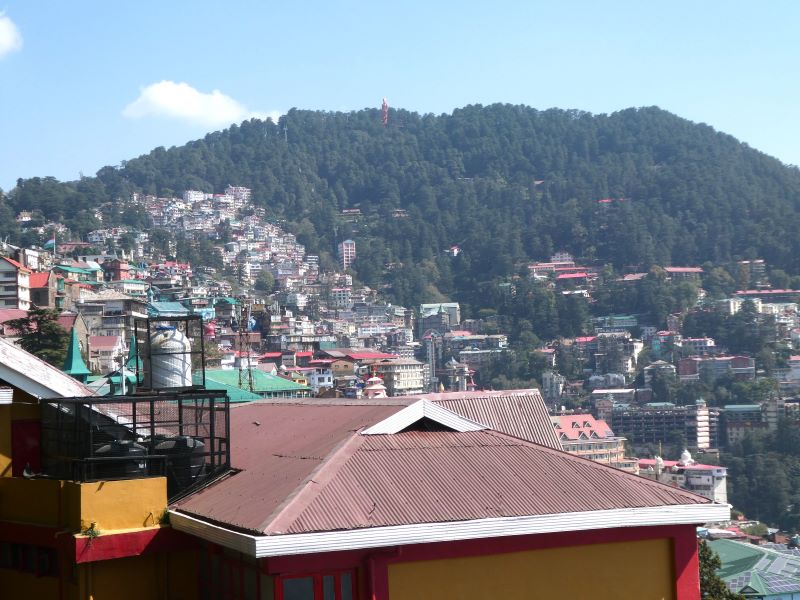
‘Christ Church’ on the Ridge
At the top of the Mall, on ‘The Ridge’, is ‘Christ Church’, the second oldest church in North India. Built in a neo-gothic style, the ground on which it was built was broken in September 1844 but was not established as a church until 1857. Europeans first came to these forested hills in the 1820s and the small Hanuman temple on Jackhoo Hill (Jakhu Hill) high above was the place of note in the area. The town of Shimla and the prominent landmark of the Anglican-based ‘Christ Church’ was built and the town began to develop as a health resort for the British. The church was extensively renovated in 1932. Under the guidance of the first Indian Chaplin Rev B. S. Chander, the church has been well maintained. According to Wikipedia, the five stained glass windows include the Christian virtues of Faith, Hope, Charity, Fortitude, Patience, and Humility; and the chancel window was designed by Lockwood Kipling father of Rudyard Kipling (who was born in India in 1865). The windows, the organ and the stained glass windows were one thing but the feeling of sacredness in this Christian Church in the foothills of the spiritual Himalayas was another. The large pipe organ was installed in September 1899. We found our way into the bookshop at the back of the church, a treasure trove of writing and wisdom, and I found it hard to prise Alice away from the plethora of books that we just could not take with us.
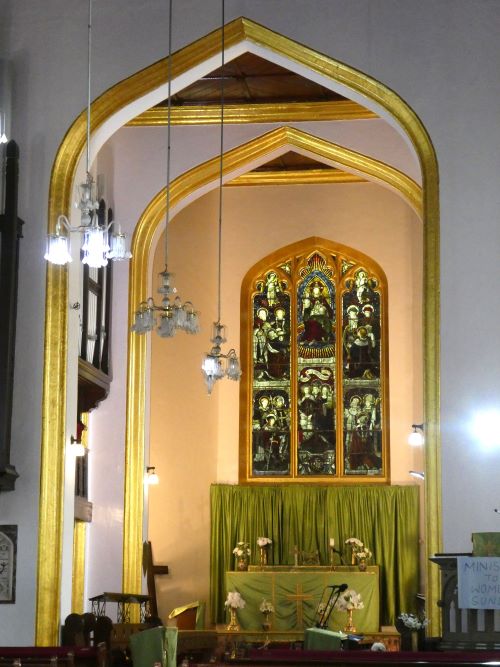

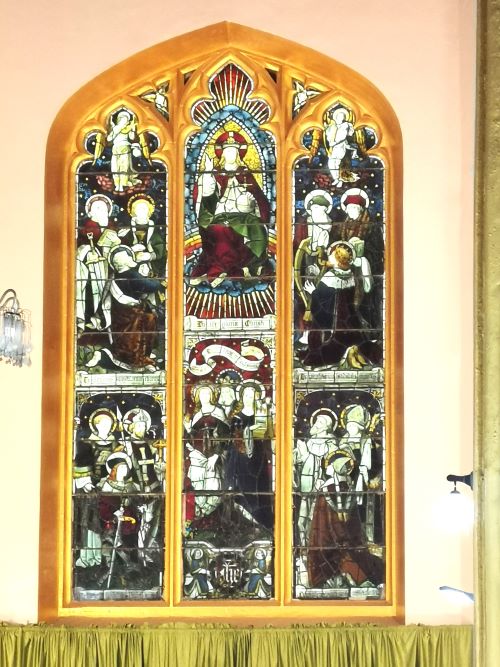
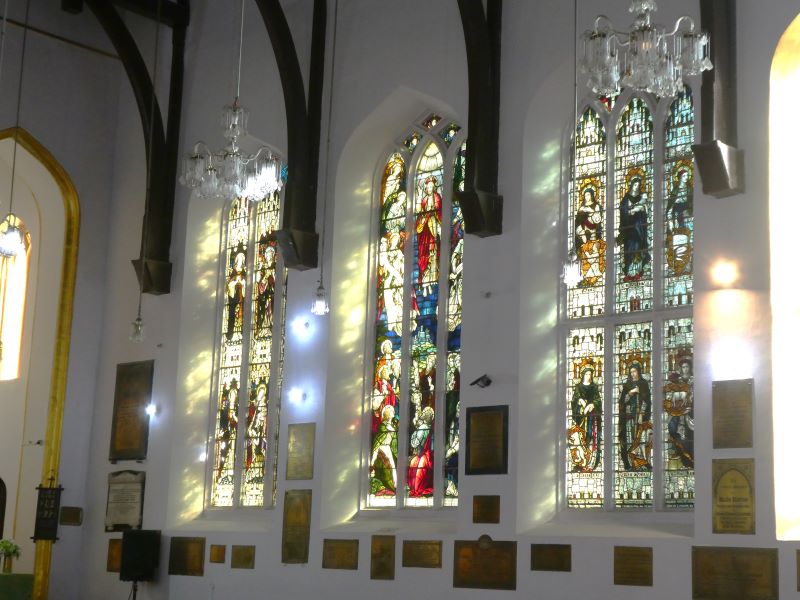
Lakkar Bazaar
Leaving this region of the town, we wandered down the steep steps into the alleyways of the bazaar. We enjoyed perusing the narrow streets and seeing artisans working in the small shops where they also sold their wares—clothes, shoes, and other items. To delight the senses further, fresh street food with delectable spicy smells floated in the air. After some time we meandered back to our accommodation.
Remember to click on the photo collages to open and fully enjoy them!!
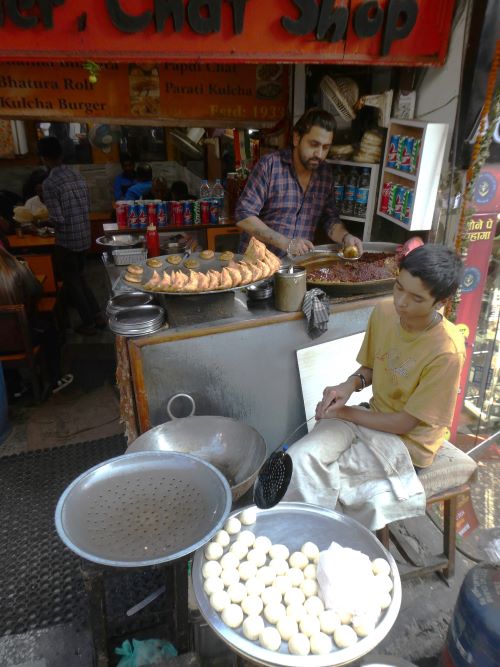
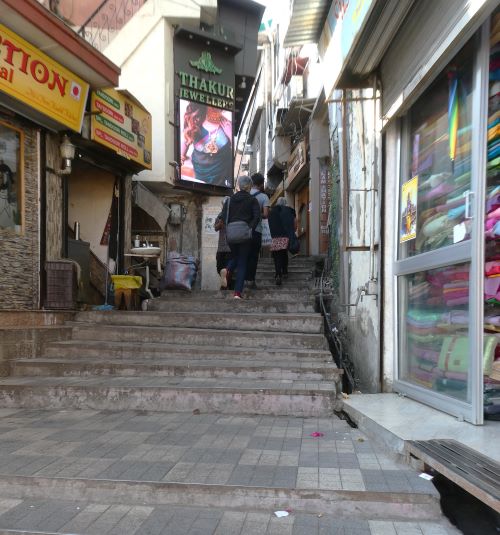

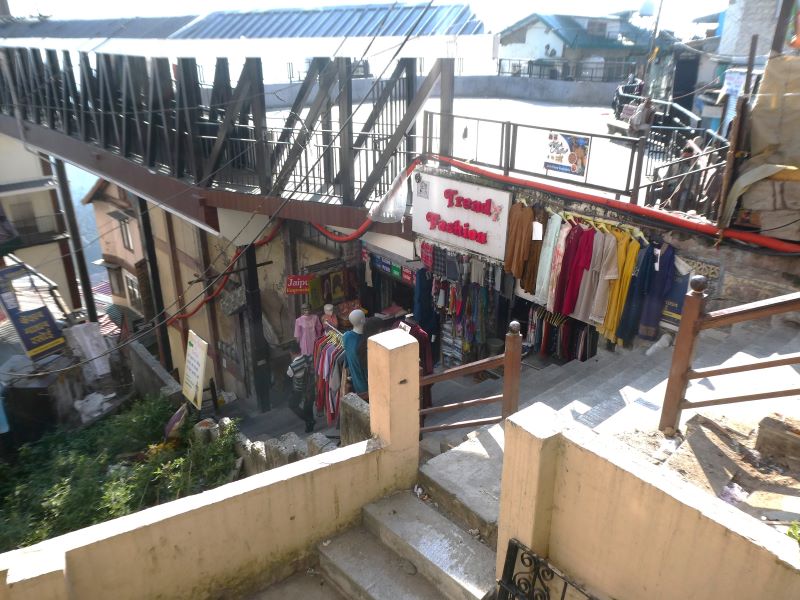
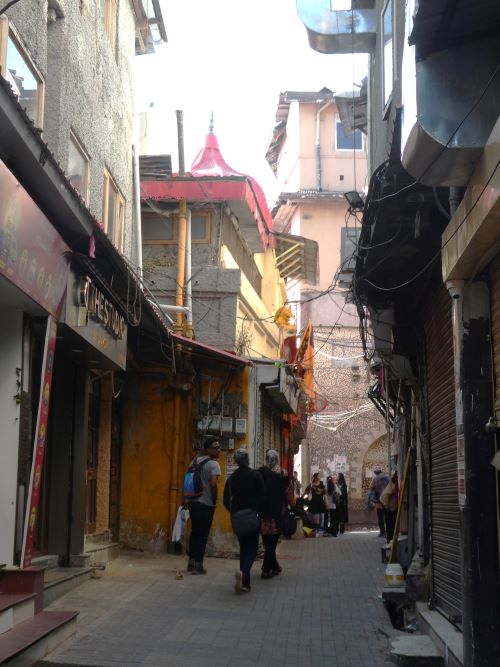
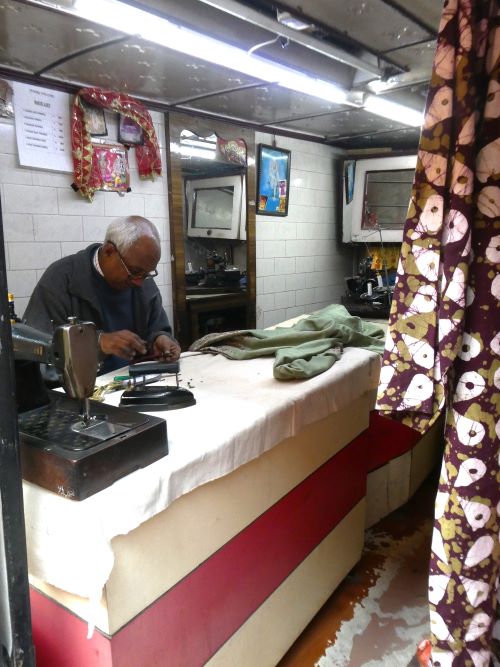
Jakhu Hill and the Hanuman Temple Complex
Later that afternoon we drove to the other side of the hilltops, heavily adorned with colourful houses and dwellings, traversing the narrow winding road past hospitals and prestigious educational institutions.
We turned off the main road and drove up towards the top of Jakhu Hill to the Hanuman Temple complex. Alice and I rode the escalator to the top while Shoba and Kartik braved the hundreds of steps to reach the top before us. Coming out of the arrival area the 108ft statue of Lord Hanuman is a breathtaking sight, reaching above the tree tops.
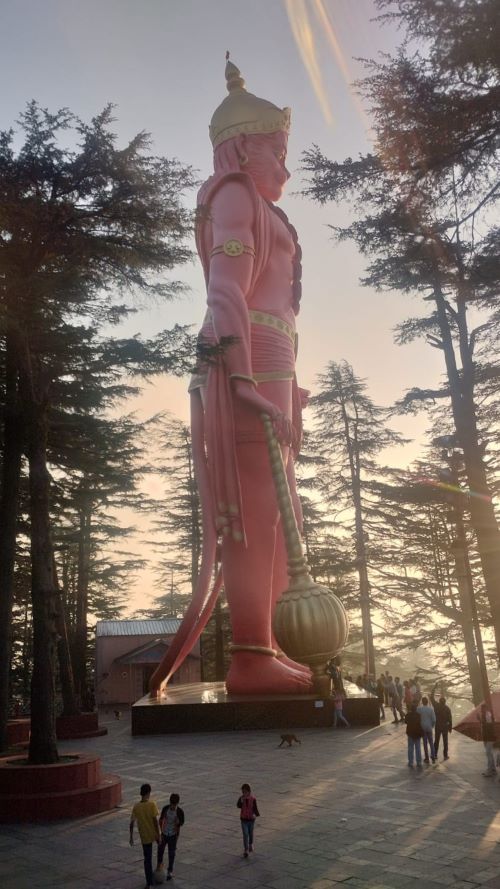
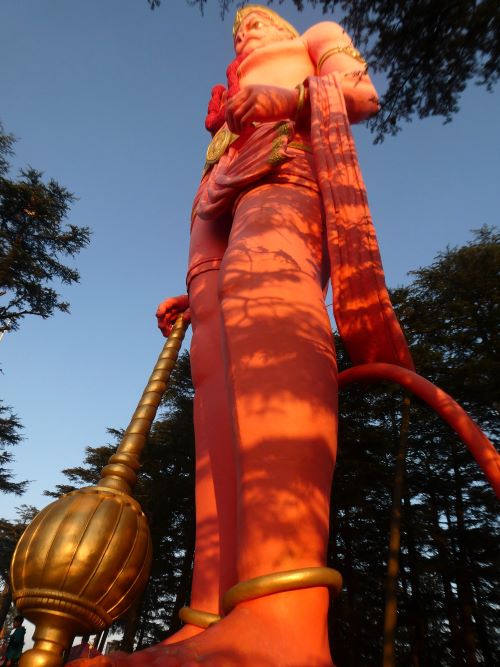
The statue overlooks the town, hills, and valleys along with the temple where we were greeted with a blessing from the priest before we took in the scenic views along with the atmosphere of the Himalayas and the playful temple monkeys. Back down from the temple, we returned to our hotel for the night.
The Road to Jubbal and Hatkoti
The following morning we wound our way along the country roads east of Shimla towards a small town off the tourist route called Hatkoti. We drove past a large animal sanctuary but, with no time to stop, we carried on through beautiful lush deodar and pine forested hill country with apple orchards and wide, panoramic views of the steep hillsides.
Passing through small and pretty villages, I began to notice architectural differences in the temples, palaces, and homes. A lot of new structures were being built in this region which Kartik noted is a worry for the environment and a risk to the people and nature of the Himalayas due to monsoon rains, landslides, and earthquakes.
I loved being on the forested winding narrow mountain roads again, where the trees are not crammed together and the light plays through the wide open spaces, filled with grasslands grazed by sheep and goats and where the small mountain villages across the valleys are easily seen. After some hours we arrived at the small town of Jubbal in search of Jubbal Palace.
Jubbal Palace
Jubbal Palace is a fascinating-looking building. Built at 2,200m (7,200ft) across 4 acres of land on a promontory rising above fields it stands out above the beautiful valley. The palace was designed in 1930 by a French Architect and built in a combination of Chinese, Indian, and European styles. The palace is cream-coloured with sloping roofs, and red chimneys and is comprised of sandstone with large portions of the structure being made out of deodar wood from the vast surrounding forests. The main entrance into the palace is through a large wooden door which is said to be 18ft high and 7ft wide, and is covered in copper and studded with coins.
The region was settled in the 1200s but in the 1800s, it became the region of Jubbal and the rulers were known as the Ranas who belonged to the Rathore clan, the last of which was Rana Baghat Chandra who took the title of Raja in 1918. The royal family lived in this impressive palace, surrounded by towering pine and deodar forests until 1977 when the grandson of Raja Rana Sir Bhagat Chand, converted part of the palace into a heritage hotel.
However, due to a lack of tourists in this region the hotel was not successful. It is now a private residence and visitors are not allowed inside. Alas, we only found this out on arrival! Nevertheless, we enjoyed the palace from a nearby street and left with lovely impressions of this grand palace and the beautiful surroundings that support its grandeur.
Hatkoti
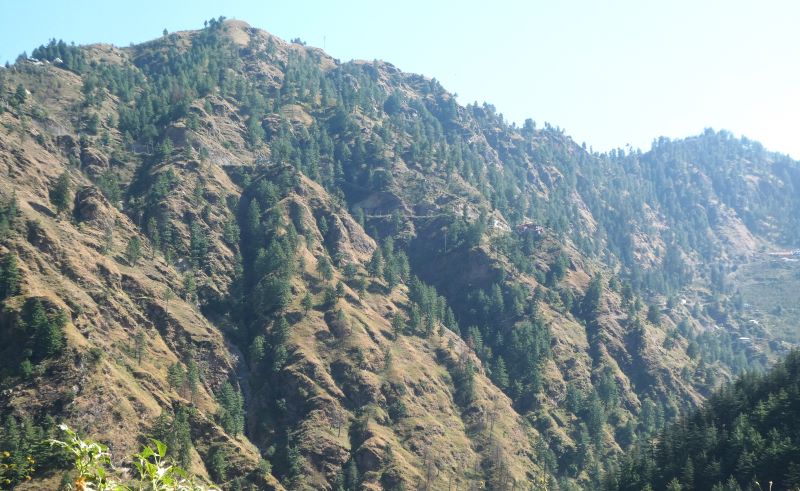
We continued our drive towards Hatkoti around the steep hillsides steeped in forests. The Hatkoti Temple complex is said to be located in the ‘Mysterious Valley of Hatkoti’ and is situated at 1,100m (3,600ft) on the River Pabbar. Three rivers converge here at Hatkoti, the mountain streams of Bishkulti and Raanvti along with the Pabbar; according to Hindu mythology this creates a ‘place of pilgrimage’. Hatkoti is also seen as the abode (or home of) the Goddess Mahishasurmardini, an incarnation of Goddess Durga.
The temples, called ‘Hateshwari Mata Temple Hatkoti’, are made of stone and are believed to have been established by Sri Adi Shankaracharya in the 3rd century AD. They are quite unusual in this region with the backdrop of forested valleys among the snow-capped Himalayas. The main temple contains the deities Devi Durga and Lord Shiva and is given special reverence. The Durga idol set within the sanctum is over 1m high and made of 8 precious metals (called ‘ashtadhatu’). There are inscriptions on both sides of the idol which apparently have not been deciphered. From within the sanctum a light is emitted from the bronze idol that shines on the worshipper powerful and bright.
Remember to click on the photo collages to open and fully enjoy them!!
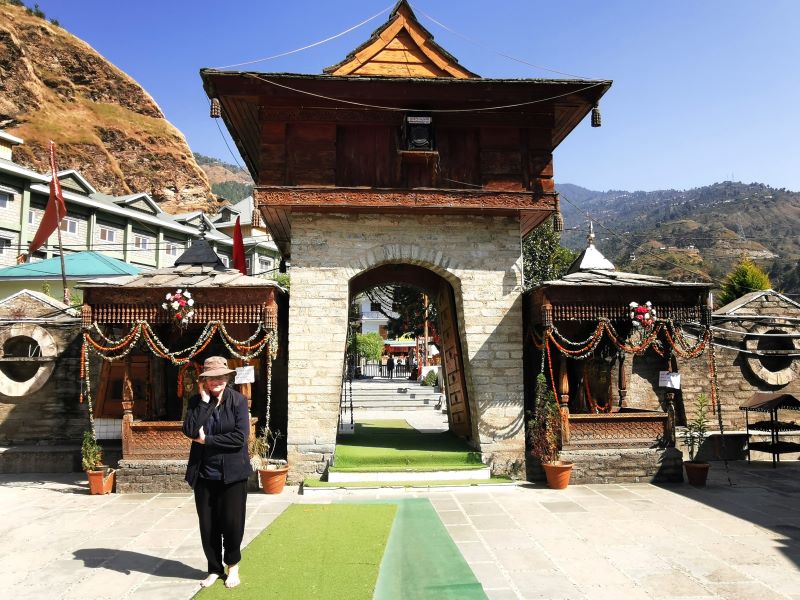
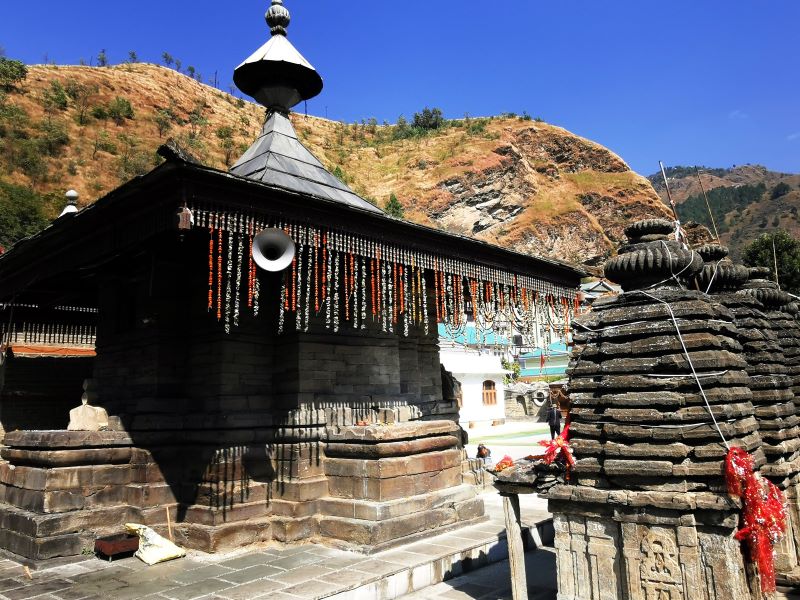
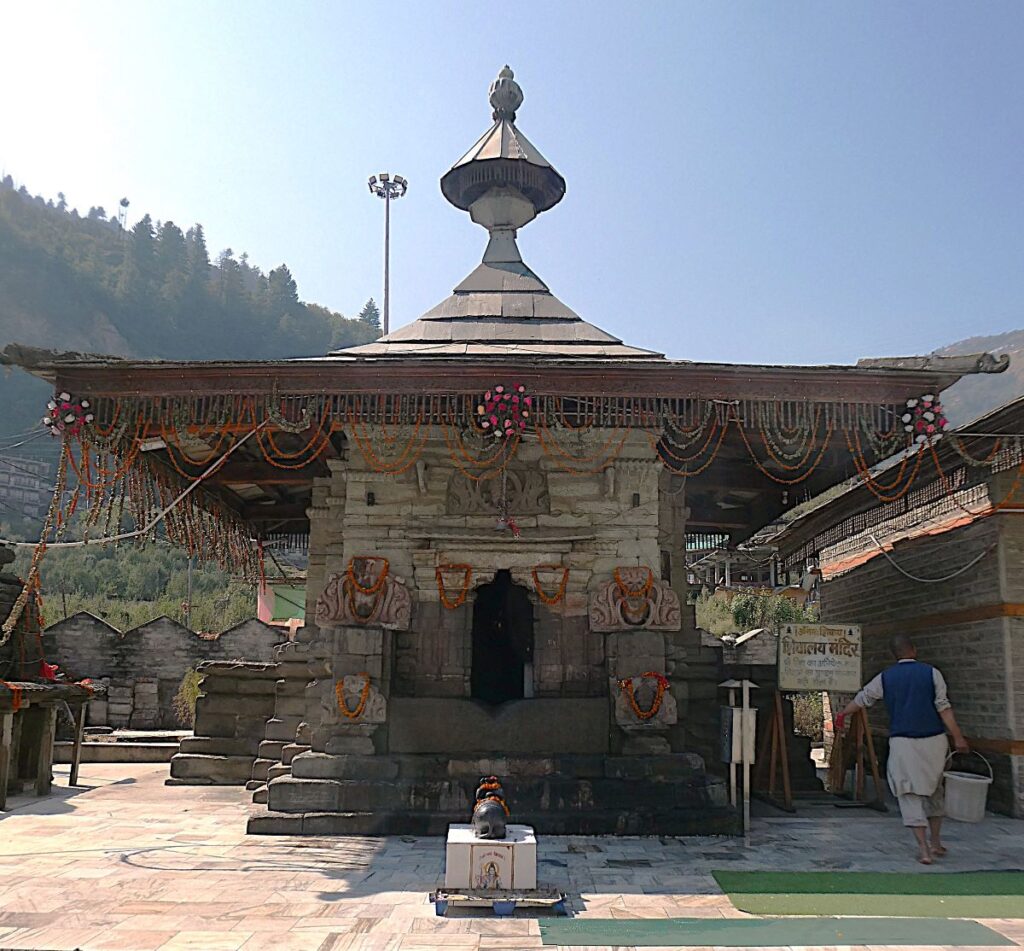

Lord Shiva is housed within a separate small temple requiring the worshipper to climb into and sit with the Shiva lingam. A lingam is a sacred object of Lord Shiva symbolizing masculine and feminine energy; the masculine energy (representing power) sits on the yoni, the feminine energy (representing creation and regeneration). The door to this temple is very small and the walls and ceiling are adorned with intricate carvings.
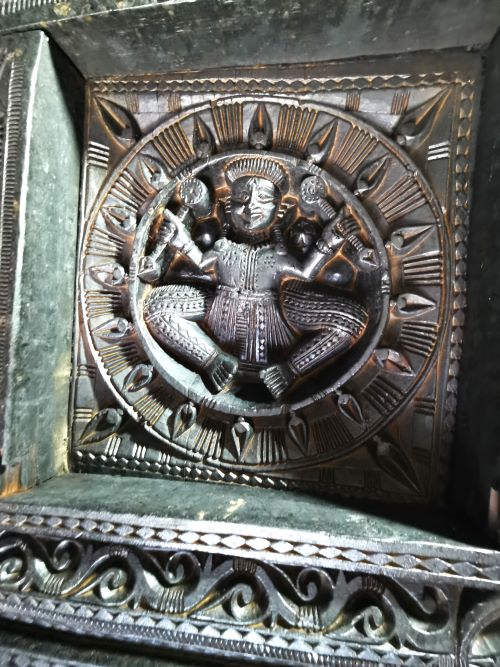
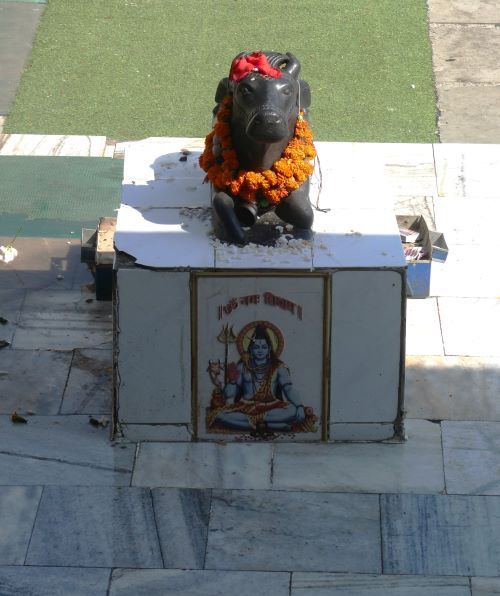
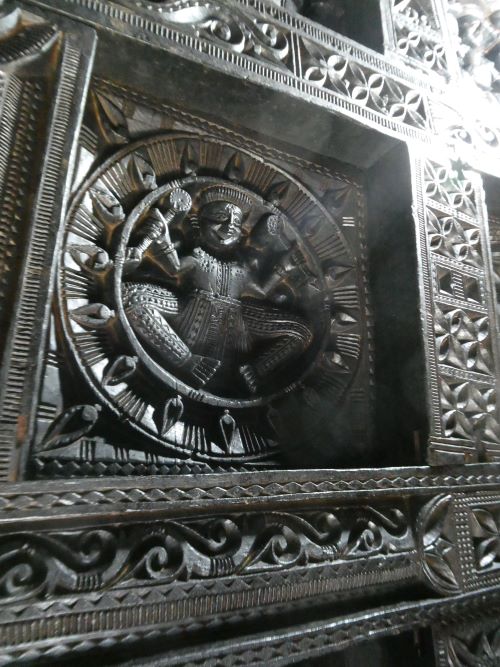
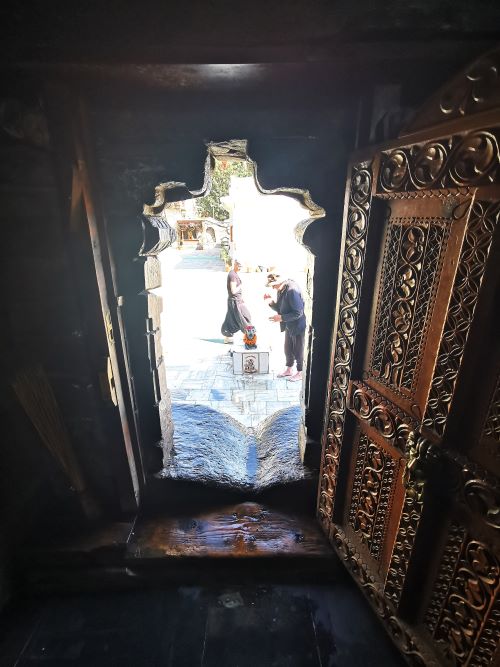
Other temples within this complex have unique qualities and architecture and are a testament to the skill of the craftsmen from ancient times.
Alongside the Shiva Temple are 5 intriguing ‘mini temples’, which, according to legend, during the exile of the Pandavas, they stopped at Hatkoti and decided to build these simple but elegant temples, adorned with stone carvings similar to others in the Hateshwari Mata complex, to mark their devotion to the Goddess.
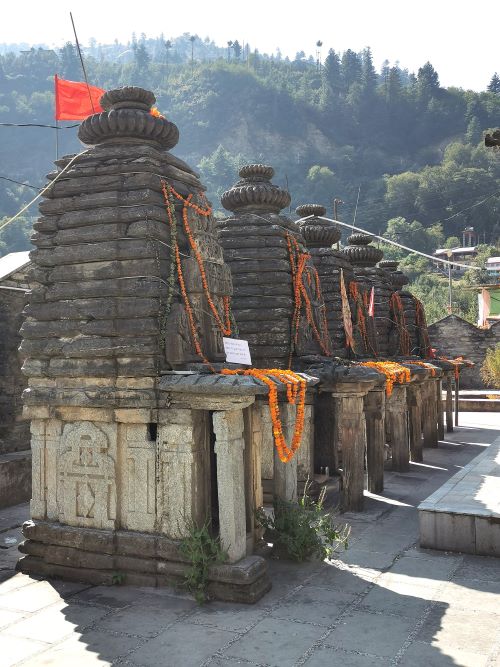
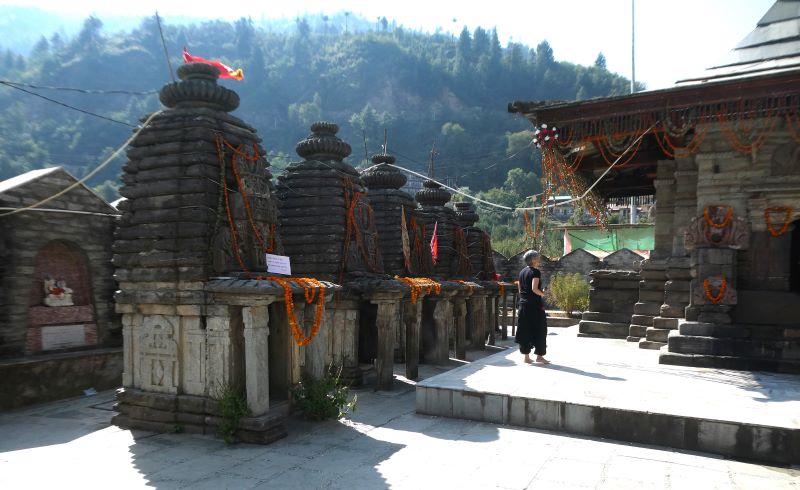
Rohru & Chanshal camp at Chirgaon
Leaving the town of Hatkoti, we drove north for about 1-hour following the Pabbar Valley road up to Rohru where we stopped for lunch at a reasonably new restaurant, beautifully decorated with high wooden ceilings, modern lighting, and wooden high backed padded chairs and bench seats. This area of the Himalayas is under development with a lot of new infrastructure in the way of hotels, restaurants, homes and holiday retreats being built.
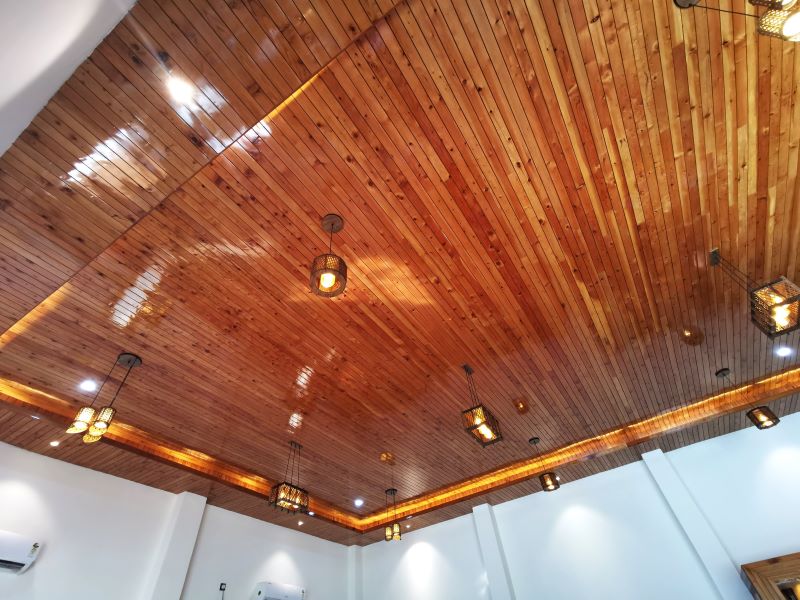

We drove even further into the mountain valley heading east until we came to our accommodation by the Pabbar River, Chanshal Camps & Resort, in the area of Chirgaon.
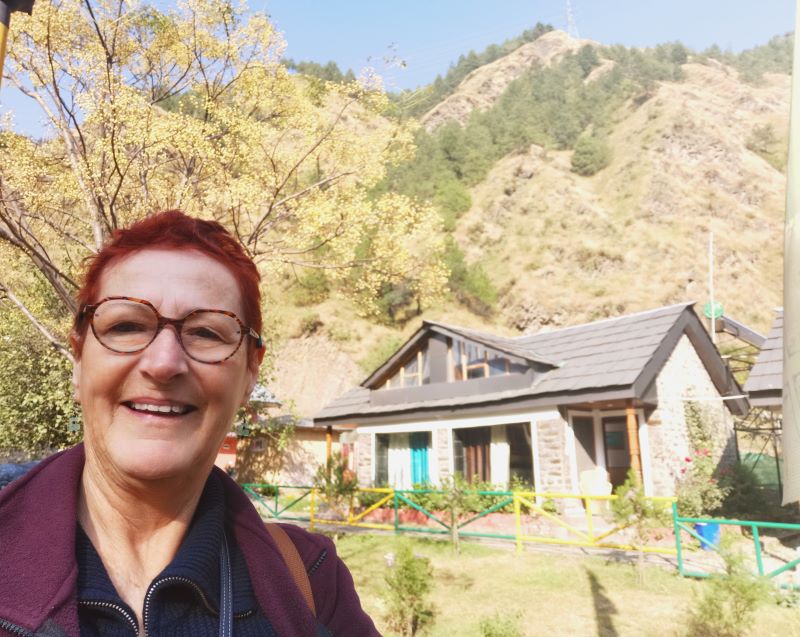
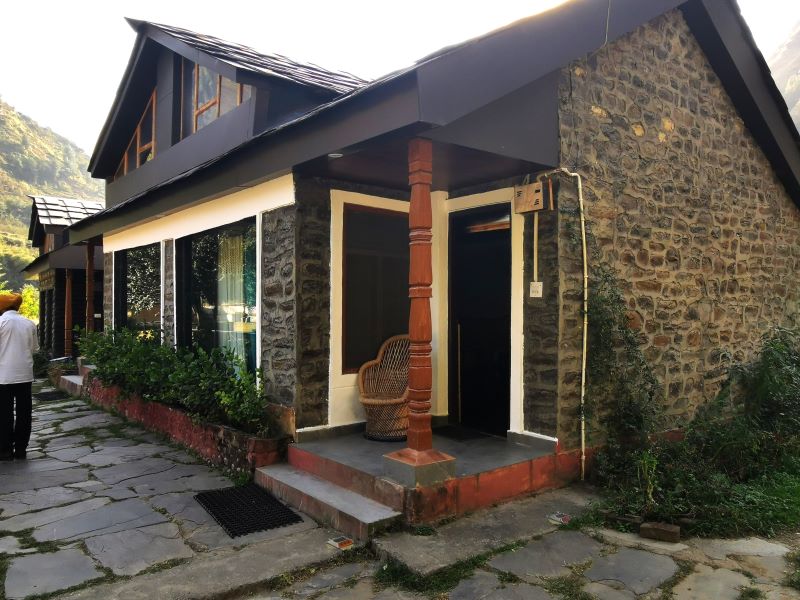
https://www.makemytrip.com/hotels/chanshal_camps_resort-details-chirgaon.html
This area is stunningly beautiful with a forest, river, and mountains to charm the senses. Due to tourism development, we felt privileged to experience it before it gets too busy. It was quiet, the river on the edge of the resort was relaxing to watch and listen to, and in the evening we sat and enjoyed a beer as we relaxed and told stories from previous trips and listened to Kartik’s adventures in the Himalayas.
The following morning Shoba and Kartik snuggled up to the local cats as we awaited a tasty breakfast which included local free-range eggs.

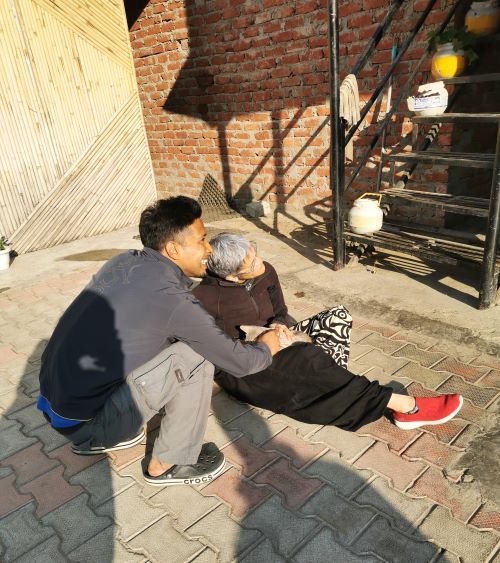
A Long day on the road to Sayna Chatti
As the sun warmed the valley, we drove down out of this ‘Shangri-La’ in the mountains continuing to follow the Pabbar River past Hatkoti. Veering to the southeast and following the curve of the forested hills above the river, we again turned left at Tiuni and followed the Tons River towards the north and deeper into the Himalayas, at times climbing high above the river. The narrow roads were at times smooth and well maintained but at other times damaged by winter rain, snow, and traffic. Thankfully our driver, Deepak, was familiar with these roads and negotiated them safely.

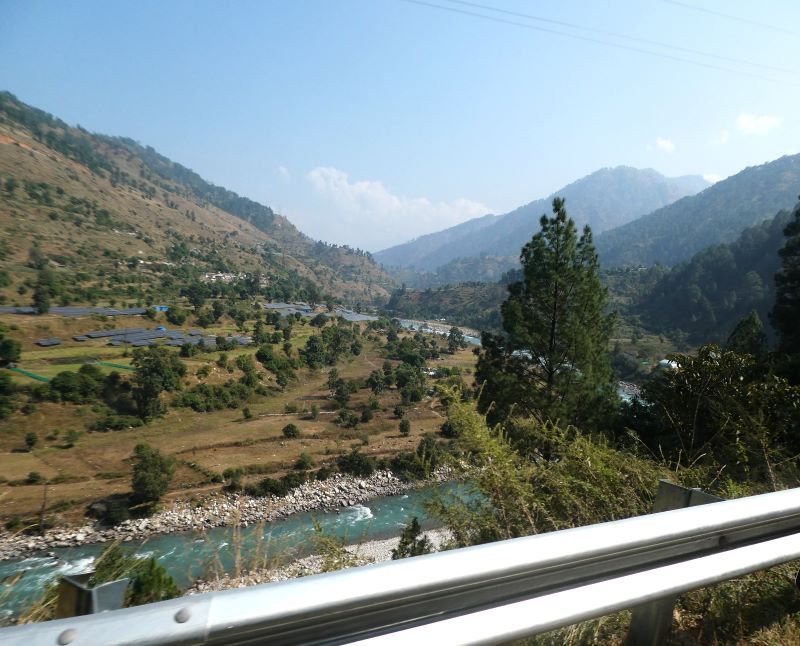
The road alongside the Pabbar River downstream from Hatkoti &The beginning of the Tons River Valley
Hanol and the Mahasu Devta Temple
Along this road at Hanol we enjoyed the view of the town’s temple complex, ‘Mahasu Devta Temple’. Built in the 9th century in the region’s Kath-Kuni or Koti-Banal style of architecture, this complex is set by the river below the Tiuni-Mori road. From the top of the road they look beautiful, and spiritually powerful; however, due to the long drive ahead, we were unable to visit these interesting temples. There are also many hikes and trails in this region for the more adventurous.
https://en.wikipedia.org/wiki/Mahasu_Devta_Temple
At Mori, we turned southeast towards Naugaon and Barkot as Kartik told us of his plans to visit the mountains of Sankri higher up in the north, where many young Indian people go to climb. I was intrigued and my interest, as usual, was taken to this mysterious place deeper in the mountains. We continued to snake around the mountain roads lined with forest above the agricultural river flats below.
Remember to click on the photo collages to open and fully enjoy them!!
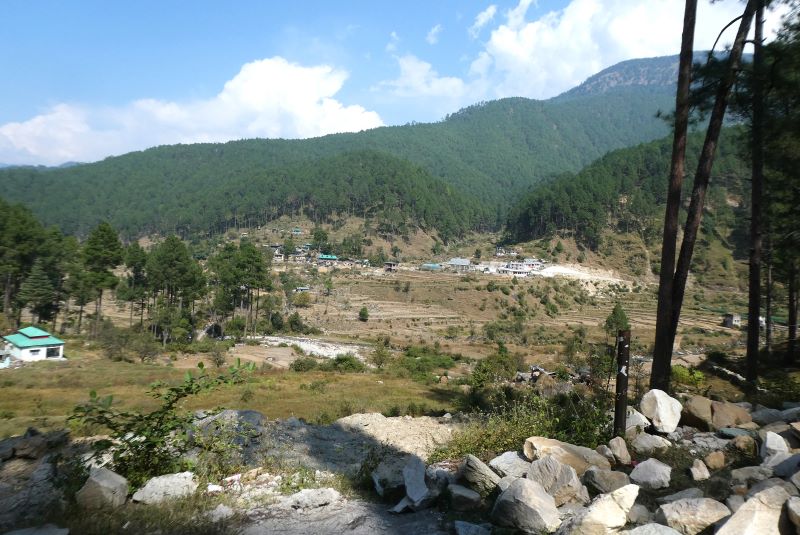
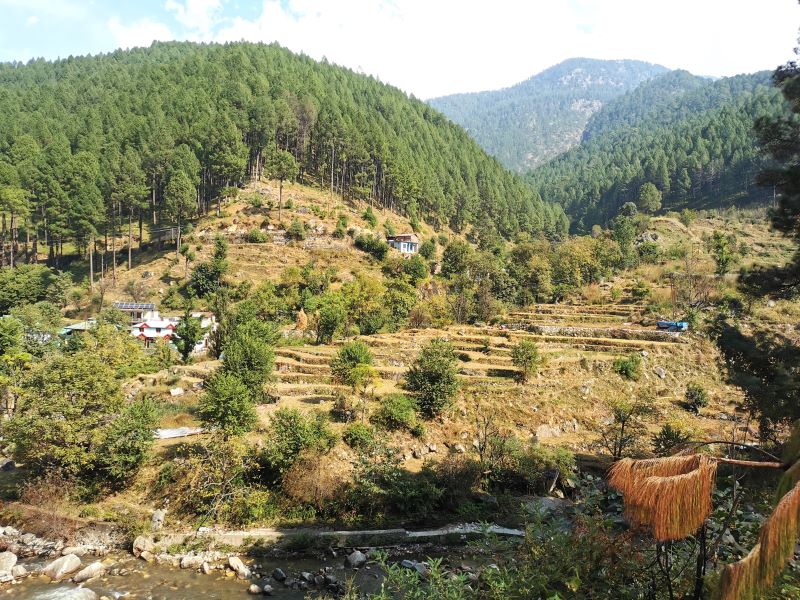
A late lunch stop with lovely rural views
We stopped for lunch at the Pahadi restaurant above the fields at Suranukiseri near Purola where the crops had been harvested and the colours ranged from green to gold, shining in the mid-afternoon light.

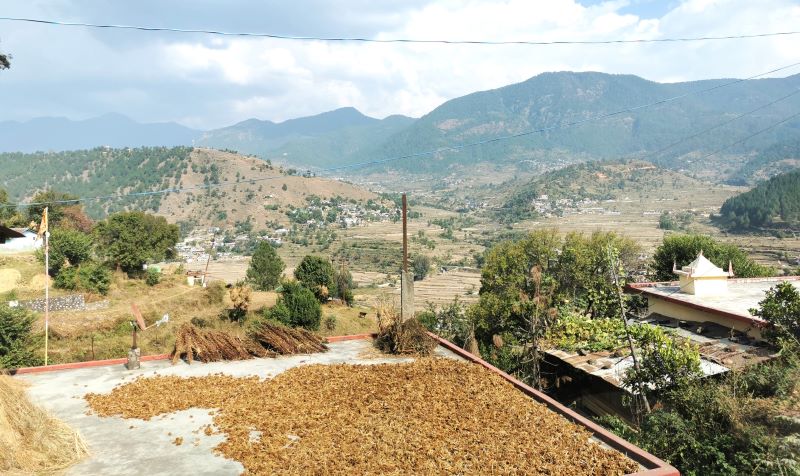
Our day’s drive was long and we were soon back on the road again, reaching Naugaon where we started towards the north and Barkot. The magnificent Banderpoonch peak and other massive peaks of the Himalayan range are distinctly visible from Barkot and came into view as we drove the narrow roads. We knew that there had been landslides in the area beyond Barkot, and as we headed deeper into the mountains we were prepared for some delays but surprisingly these were minimal.
On arrival at Syana Chatti we were wowed by the view in every direction and once the daylight was gone we watched the lights of cars and busses snaking up the road across the river where we had travelled in the late afternoon.

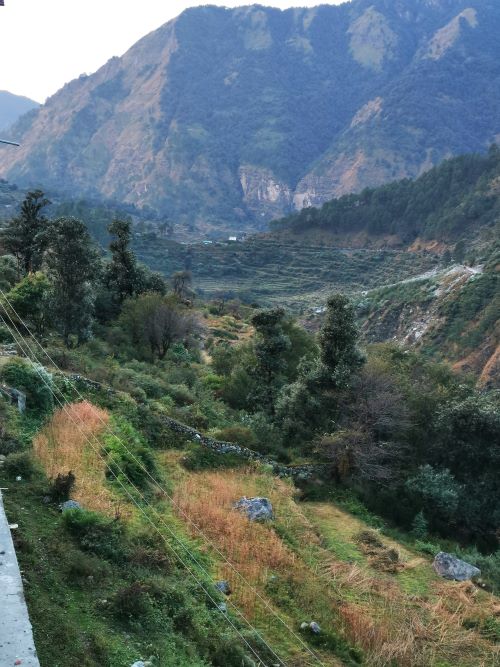
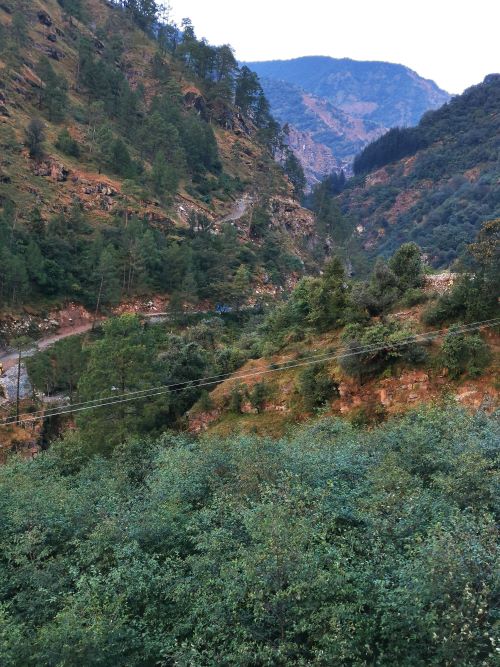
The following day we would drive around the mountains for about an hour passing several small villages with names such as Rana Chatti and Haunaman Chatti, until we reached the end of the road at Janki Chatti.
From here we would trek to Yamunotri temple complex 7ks up the valley. For now though, being the end of autumn, and winter fast approaching, it was cold in the mountains and we were glad to snuggle up in the warmth of the hotel for the night.
The following story (Part II) will tell of our visit to the Yamunotri Temple complex (3,293m or 10,804ft) and our drive the next day to visit Gangotri temple which sits deep in the mountains (3,200m or 10,499ft) and forms the main part of the Char Dham pilgrimage.


